Q.1 Consider the following types of vehicles:
I. Full battery Electric vehicles
II. Hydrogen fuel cell vehicles
III. Fuel cell electric hybrid vehicles
How many of the above are considered as alternative powertrain vehicles?
a) Only one
b) Only two
c) All the three
d) None
Correct Answer: c) All the three
Explanation: An alternative powertrain vehicle refers to a vehicle that uses energy sources other than the conventional internal combustion engine powered by petrol or diesel.
Full battery electric vehicles operate entirely on electricity stored in batteries, making them a zero-emission and environmentally friendly alternative to traditional vehicles.
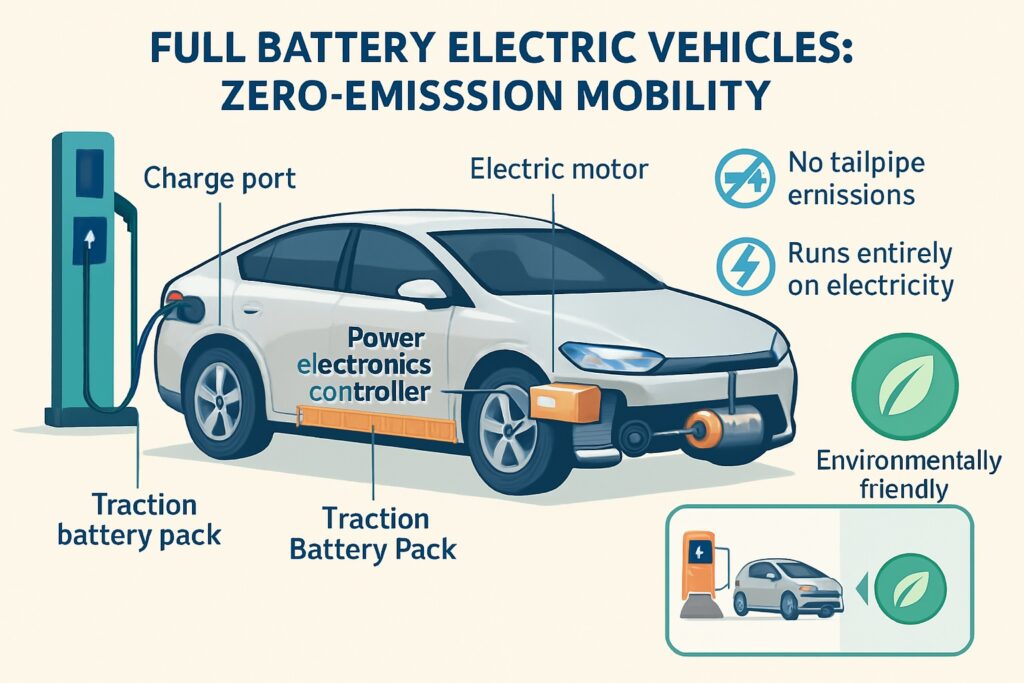
Hydrogen fuel cell vehicles produce electricity through a chemical reaction between hydrogen and oxygen, emitting only water vapor. These are considered clean energy vehicles.

Fuel cell electric hybrid vehicles combine the use of hydrogen fuel cells and electric batteries, increasing efficiency and reducing emissions.
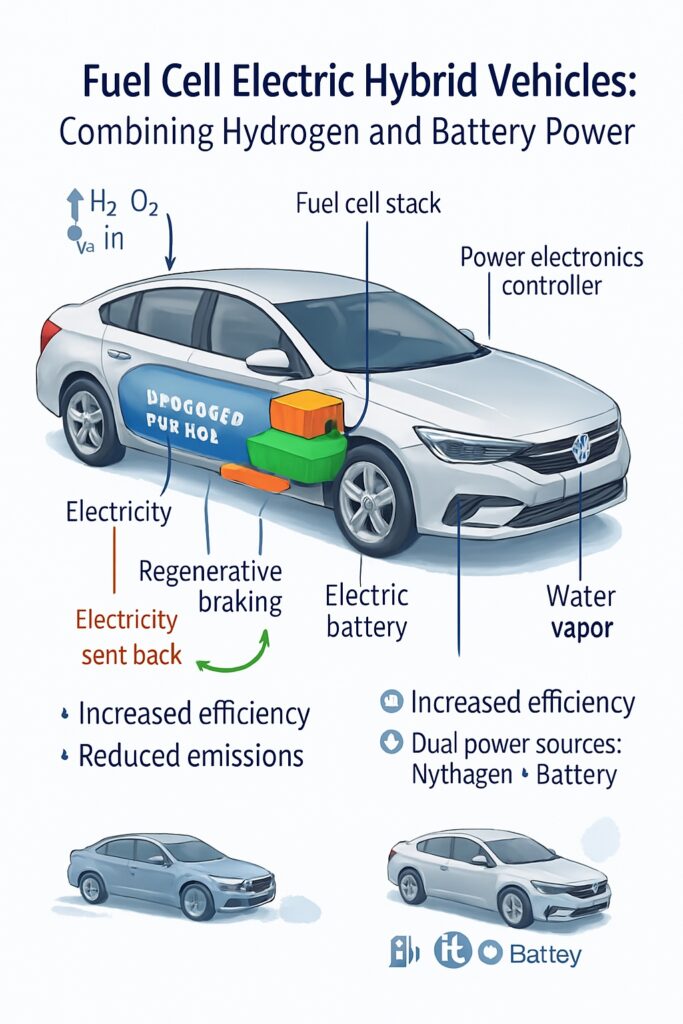
Since all three types do not depend on fossil fuels and utilize cleaner, sustainable energy technologies, they are all classified as alternative powertrain vehicles.
Q.2 With reference to Unmanned Aerial Vehicles (UAVs), consider the following statements:
I. All types of UAVs can do vertical landing.
II. All types of UAVs can do automated hovering.
III. All types of UAVs can use battery only as a source of power supply.
How many of the statements given above are correct?
a) Only one
b) Only two
c) All the three
d) None
Correct answer: d) None
Explanation: All three statements given are incorrect.
The first statement is incorrect because not all types of UAVs can perform vertical landing. Only certain types, such as rotary-wing UAVs (like quadcopters) or specially designed VTOL (Vertical Take-Off and Landing) drones, can land vertically. Fixed-wing UAVs, which resemble airplanes, usually require a runway or catapult for takeoff and landing.
The second statement is also incorrect because automated hovering is possible only for rotary-wing UAVs and not for fixed-wing UAVs, which require continuous forward movement to stay airborne and cannot hover in one place.
The third statement is incorrect as well because UAVs can be powered by different energy sources, including internal combustion engines, gasoline, jet fuel, and solar power, especially in the case of larger or long-endurance UAVs used in military or commercial applications. Hence, none of the statements is correct.
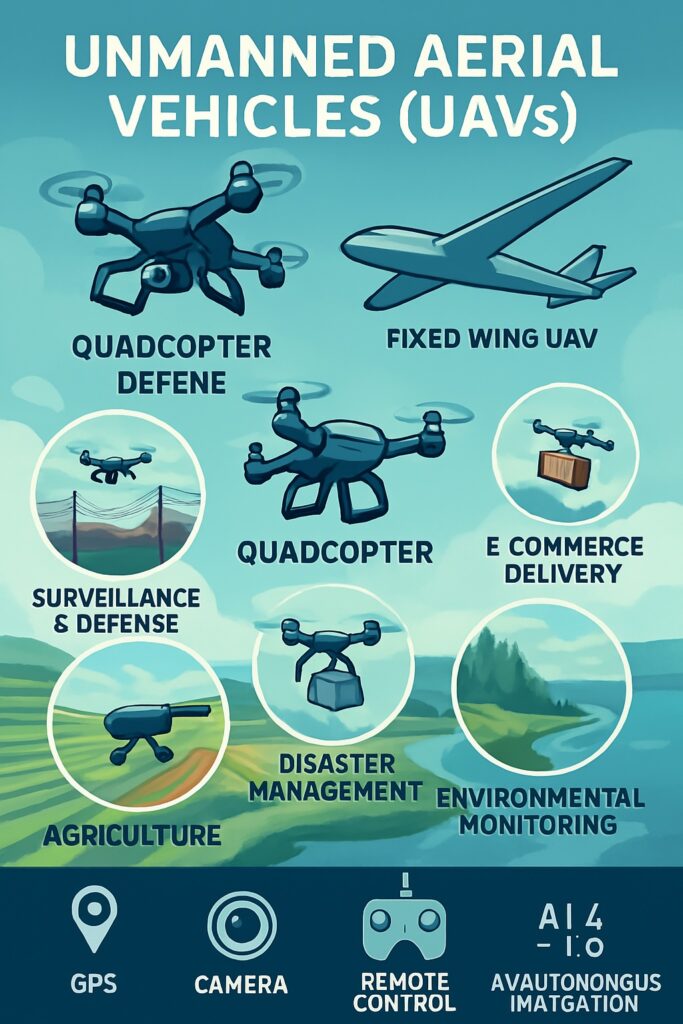
Q.3 In the context of electric vehicle batteries, consider the following elements:
I. Cobalt
II. Graphite
III. Lithium
IV. Nickel
How many of the above usually make up battery cathodes?
a) Only one
b) Only two
c) Only three
d) All the four
Correct answer: c) Only three
Explanation: Electric vehicle (EV) batteries typically use a combination of materials in their cathodes and anodes. The cathode is the positive electrode in a lithium-ion battery and plays a key role in determining battery performance, capacity, and safety. Among the elements listed, cobalt, lithium, and nickel are commonly used in the cathodes of EV batteries. For example, widely used battery chemistries like NMC (Nickel Manganese Cobalt) and NCA (Nickel Cobalt Aluminum) include these three elements.
Graphite, on the other hand, is not used in the cathode but is the most common material used in the anode, which is the negative electrode. Therefore, only three of the elements listed—cobalt, lithium, and nickel—usually make up battery cathodes.
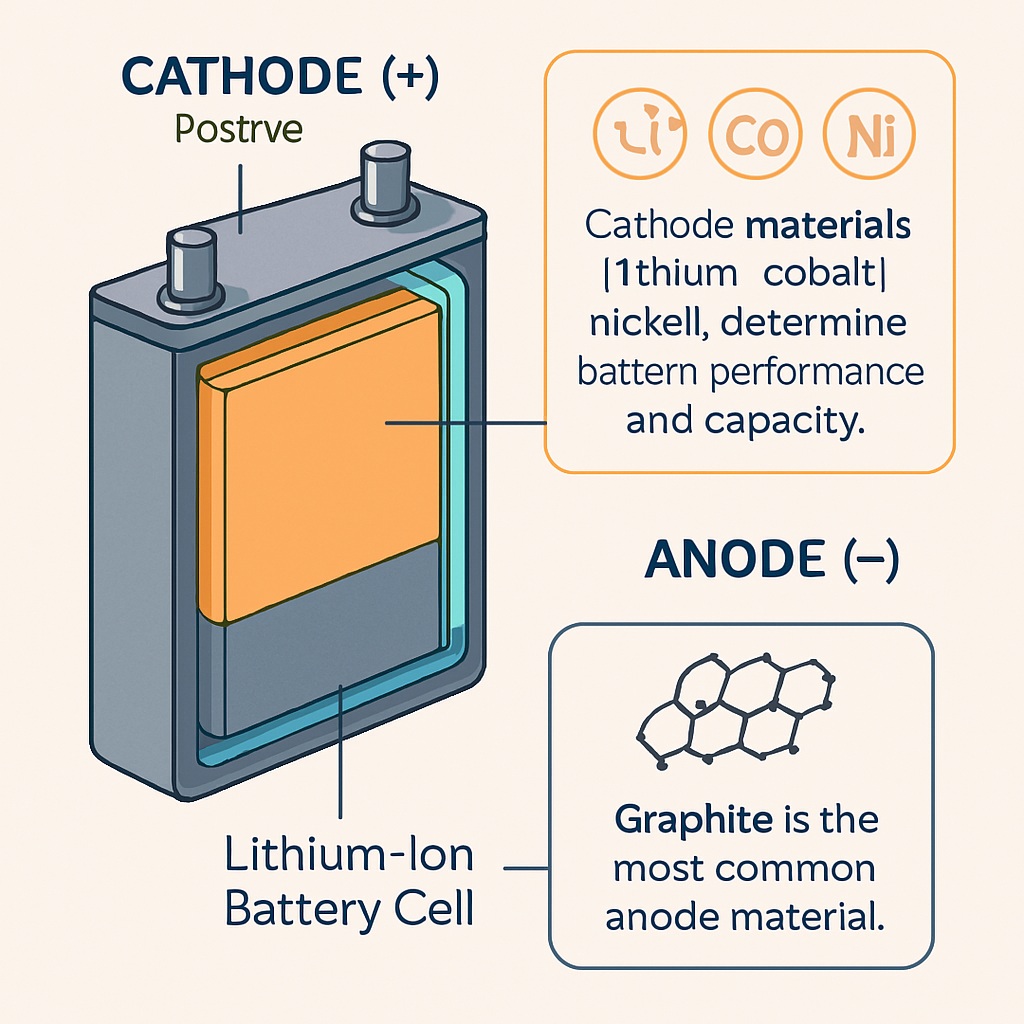
Q.4 Consider the following:
I. Cigarette butts
II. Eyeglass lenses
III. Car tyres
How many of them contain plastic?
a) Only one
b) Only two
c) All the three
d) None
Correct answer: c) All the three
Solution: All three items listed contain plastic components. Cigarette butts, although often mistaken for cotton or paper, actually contain cellulose acetate, a type of plastic that is slow to degrade in the environment. Eyeglass lenses are commonly made from polycarbonate or other plastic polymers instead of glass, especially in modern lightweight and impact-resistant designs.
Car tyres, while largely made from rubber, also include synthetic polymers such as styrene-butadiene rubber (SBR), which is a plastic-based material added to enhance durability and performance. Therefore, all three—cigarette butts, eyeglass lenses, and car tyres—contain plastic.
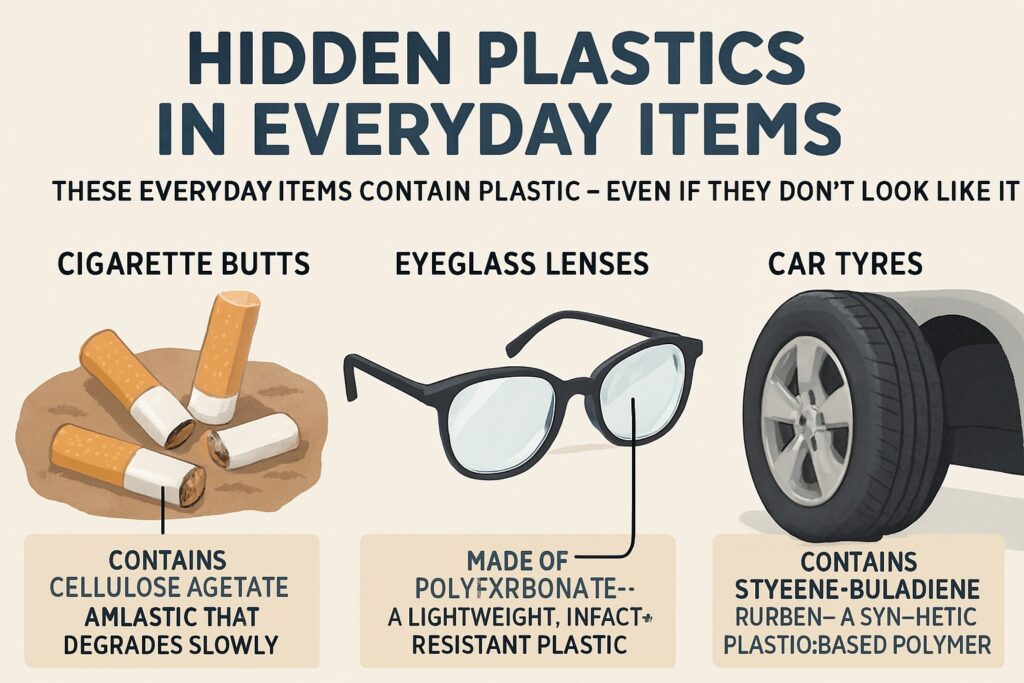
Q.5 Consider the following substances:
I. Ethanol
II. Nitroglycerine
III. Urea
Coal gasification technology can be used in the production of how many of them?
a) Only one
b) Only two
c) All the three
d) None
Correct answer: c) All the three
Explanation: Coal gasification is a technology that converts coal into syngas, which primarily contains hydrogen, carbon monoxide, and carbon dioxide. This syngas serves as a building block for a variety of chemical processes.
Ethanol can be produced synthetically from syngas through catalytic conversion, although it is more commonly made via fermentation.
Urea is synthesized from ammonia and carbon dioxide, and ammonia can be produced from hydrogen derived through coal gasification, making urea production possible via this route.
Nitroglycerine, which is made from glycerol and nitric acid, may not appear directly connected to coal, but the nitric acid used in its production can be derived from ammonia, and ammonia can be produced using hydrogen sourced from coal gasification.
Therefore, coal gasification can contribute indirectly or directly to the production of all three substances.

Q.6 What is the common characteristic of the chemical substances generally known as CL-20, HMX and LLM-105, which are sometimes talked about in media?
a) These are alternatives to hydro-fluorocarbon refrigerants
b) These are explosives in military weapons
c) These are high-energy fuels for cruise missiles
d) These are fuels for rocket propulsion
Correct answer: b) These are explosives in military weapons
Explanation: CL-20 (Hexanitrohexaazaisowurtzitane), HMX (High Melting Explosive or Octogen), and LLM-105 (1-Oxidino-3,5-dinitro-1,2,4-triazole) are all high-energy explosives used primarily in military applications. These substances are known for their powerful explosive performance, stability, and effectiveness in modern munitions. CL-20 is one of the most energetic non-nuclear explosives developed and is often mentioned as a potential replacement for other military-grade explosives. HMX is widely used in detonators and warheads. LLM-105 is a newer generation of insensitive high explosives with a focus on safety and performance. Thus, the common feature is that they are explosives used in military weapons.
Q.7 Consider the following statements:
I. It is expected that Majorana 1 chip will enable quantum computing.
II. Majorana 1 chip has been introduced by Amazon Web Services (AWS).
III. Deep learning is a subset of machine learning.
How many of the statements given above are correct?
a) I and II only
b) II and III only
c) I and III only
d) I, II and III
Correct answer: c) I and III only
Explanation: The Majorana 1 chip is associated with quantum computing research and is named after Majorana fermions, which are theoretical particles being explored for use in topological quantum computers. Companies like Microsoft are known to be working on such technology, not Amazon Web Services (AWS). Therefore, statement I is correct and statement II is incorrect.
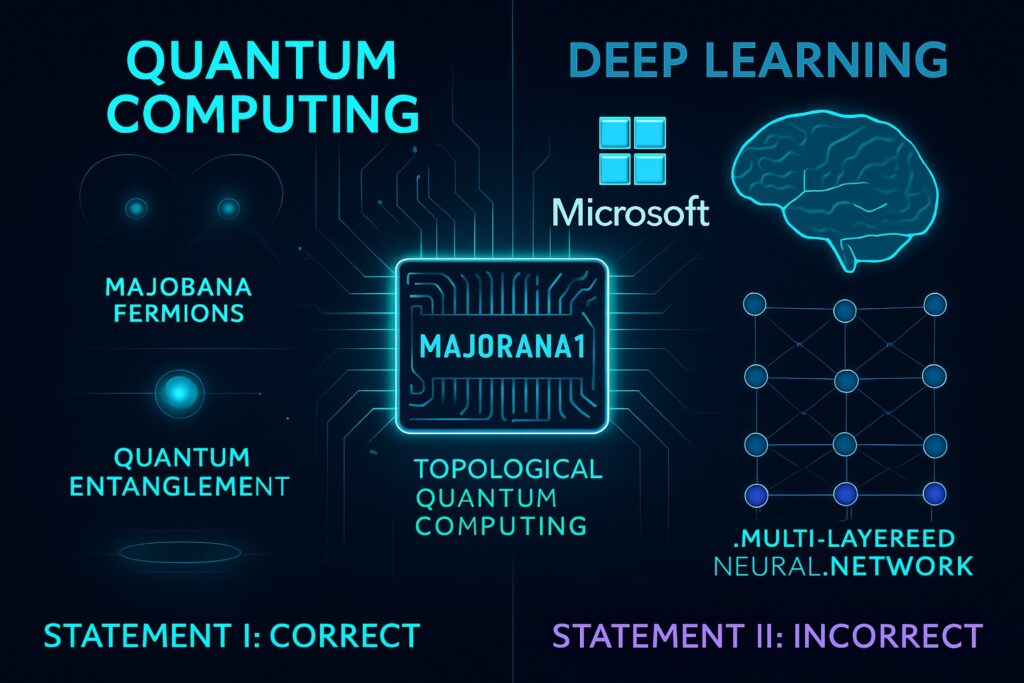
Statement III is correct because deep learning is indeed a subset of machine learning that uses artificial neural networks with multiple layers to model complex patterns in data. Hence, only statements I and III are correct.
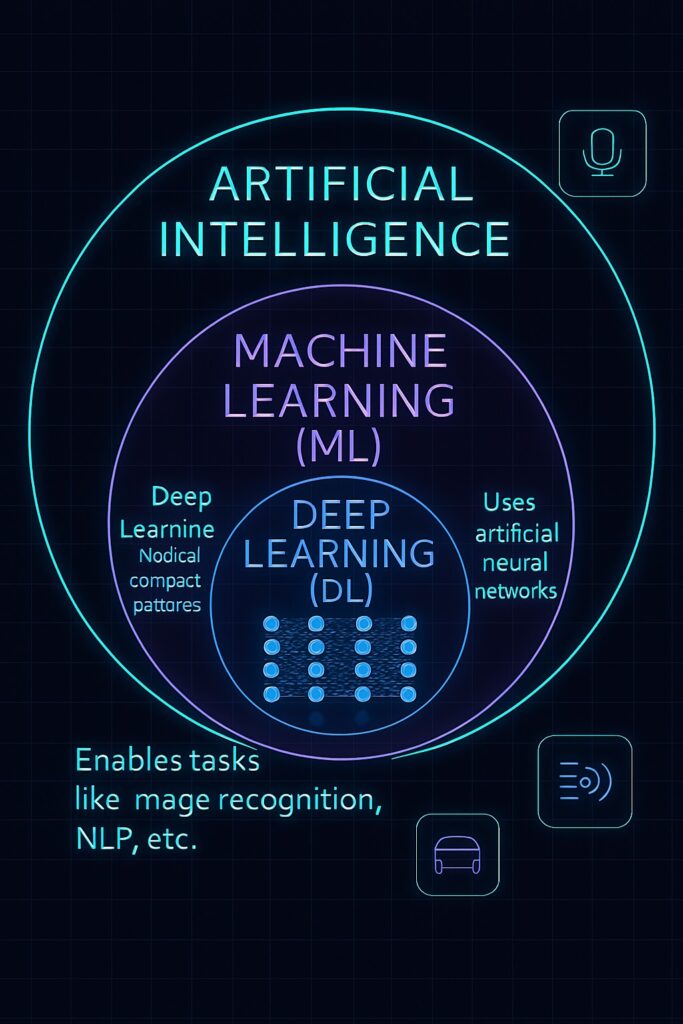
Q.8 With reference to monoclonal antibodies, often mentioned in news, consider the following statements:
I. They are man-made proteins.
II. They stimulate immunological function due to their ability to bind to specific antigens.
III. They are used in treating viral infections like that of Nipah virus.
Which of the statements given above are correct?
a) I and II only
b) II and III only
c) I and III only
d) I, II and III
Correct answer: d) I, II and III
Explanation: Monoclonal antibodies are artificially created proteins that mimic the immune system’s ability to fight off harmful pathogens. Hence, statement I is correct. These antibodies are designed to bind to specific antigens, such as those found on viruses or cancer cells, which allows them to stimulate or modify immune responses, making statement II correct as well. In recent years, monoclonal antibody therapies have been developed to treat several viral infections, including Ebola and Nipah virus, where they have shown promising results in neutralizing the virus and aiding recovery, confirming that statement III is also correct. Therefore, all three statements are correct.
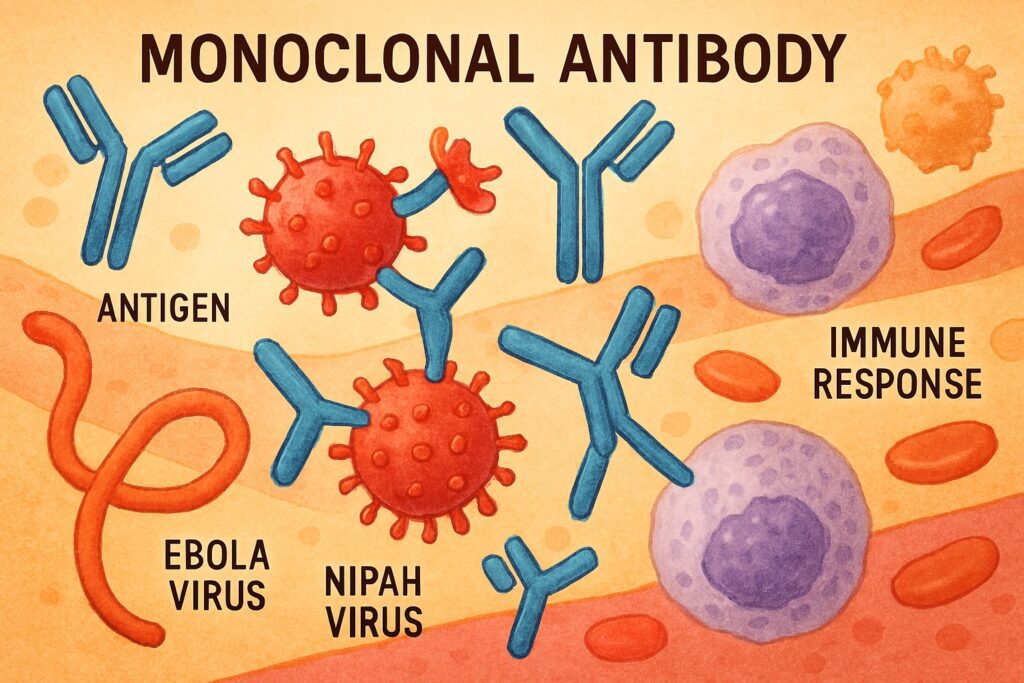
Q.9 Consider the following statements:
I. No virus can survive in ocean waters.
II. No virus can infect bacteria.
III. No virus can change the cellular transcriptional activity in host cells.
How many of the statements given above are correct?
a) Only one
b) Only two
c) All the three
d) None
Correct answer: d) None
Explanation: All three statements are incorrect. Statement I is incorrect because many viruses can survive in ocean waters. In fact, oceans are filled with marine viruses, especially bacteriophages, which infect marine bacteria and play a major role in controlling microbial populations and nutrient cycles. Statement II is incorrect because viruses that infect bacteria are well-known and are called bacteriophages. These are widely studied and even used in experimental therapies (phage therapy). Statement III is also incorrect because viruses do change the cellular transcriptional activity of host cells. When a virus infects a cell, it often hijacks the cell’s machinery to transcribe and replicate its own genetic material, altering normal cellular processes. Therefore, none of the statements are correct, making option d) None the right answer.
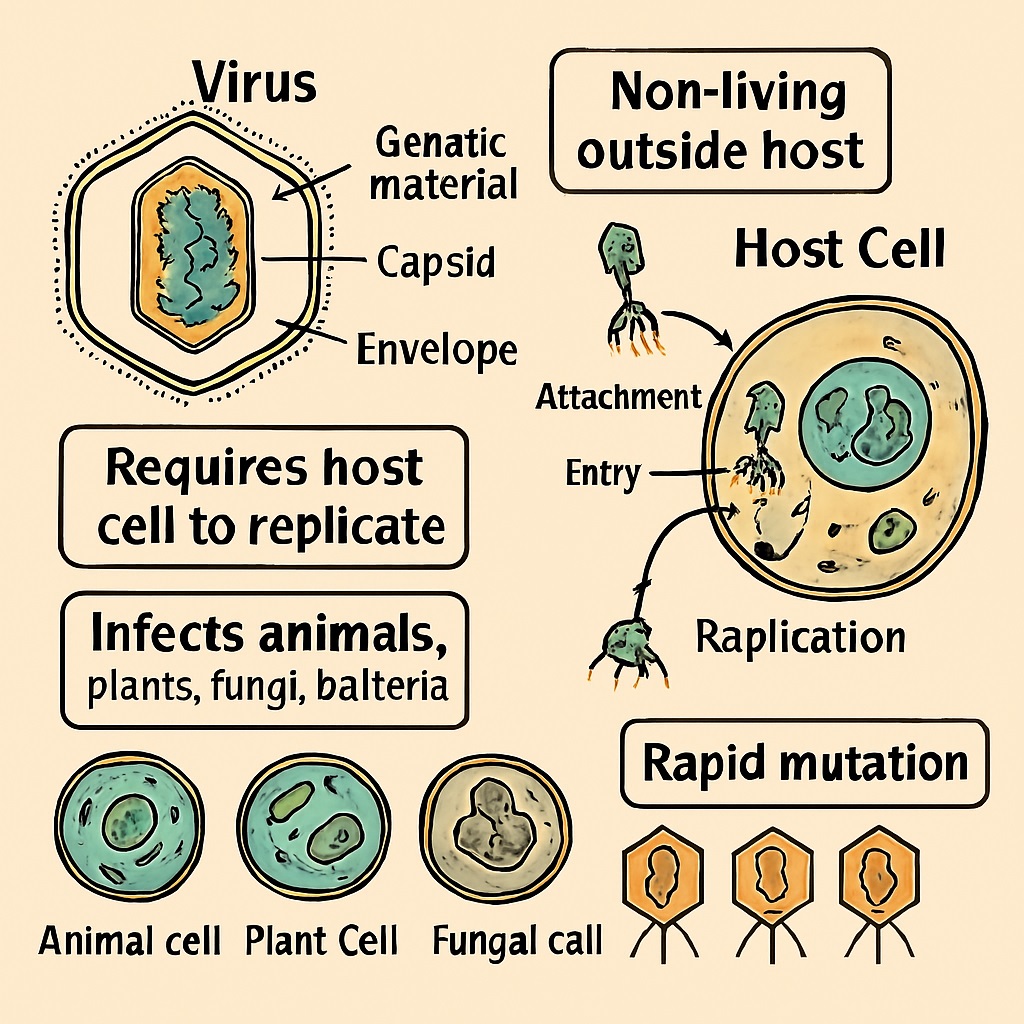
Q.10 Consider the following statements:
Statement I: Activated carbon is a good and an attractive tool to remove pollutants from effluent streams and to remediate contaminants from various industries.
Statement II: Activated carbon exhibits a large surface area and a strong potential for adsorbing heavy metals.
Statement III: Activated carbon can be easily synthesized from environmental wastes with high carbon content.
Which one of the following is correct in respect of the above statements?
a) Both Statement II and Statement III are correct and both of them explain Statement I
b) Both Statement II and Statement III are correct but only one of them explains Statement I
c) Only one of the Statements II and III is correct and that explains Statement I
d) Neither Statement II nor Statement III is correct
Correct answer: a) Both Statement II and Statement III are correct and both of them explain Statement I
Explanation: Activated carbon is widely used in environmental applications due to its large surface area, porous structure, and strong adsorption capacity, especially for removing organic pollutants and heavy metals from wastewater. This supports Statement II, which helps explain why activated carbon is effective in pollutant removal as mentioned in Statement I.
Additionally, Statement III is also correct because activated carbon can be easily produced from a variety of carbon-rich waste materials, such as coconut shells, sawdust, and agricultural residues, making it a cost-effective and sustainable solution. Therefore, both Statement II and Statement III are correct and they both explain Statement I.
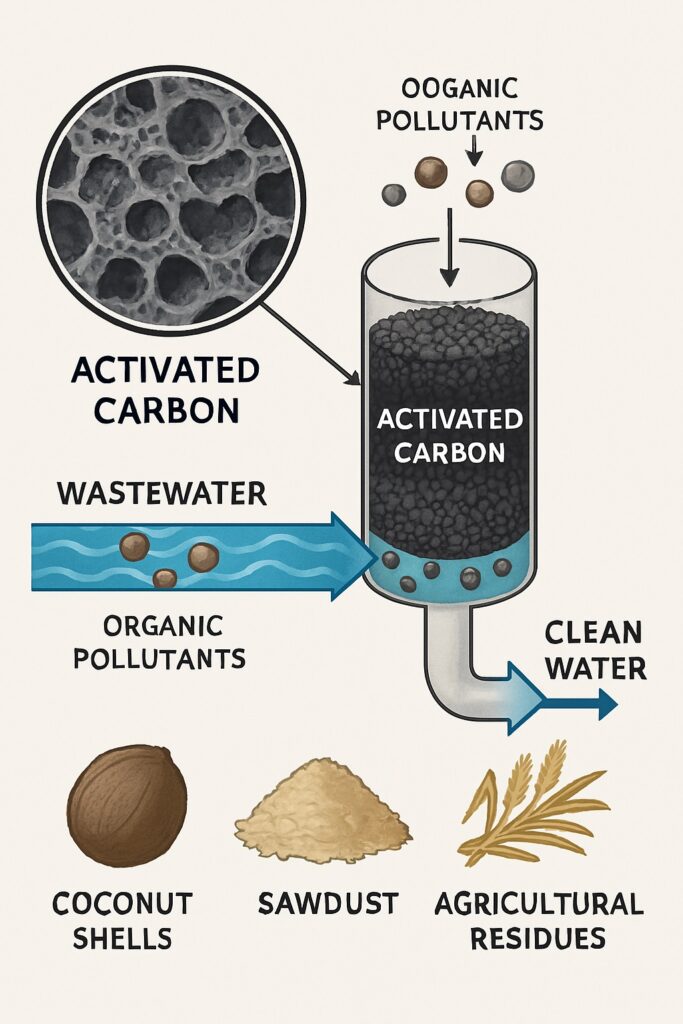
Q.11 Consider the following statements:
Statement I: Studies indicate that carbon dioxide emissions from the cement industry account for more than 5% of global carbon emissions.
Statement II: Silica-bearing clay is mixed with limestone while manufacturing cement.
Statement III: Limestone is converted into lime during clinker production for cement manufacturing.
Which one of the following is correct in respect of the above statements?
a) Both Statement II and Statement III are correct and both of them explain Statement I
b) Both Statement II and Statement III are correct but only one of them explains Statement I
c) Only one of the Statements II and III is correct and that explains Statement I
d) Neither Statement II nor Statement III is correct
Correct answer: b) Both Statement II and Statement III are correct but only one of them explains Statement I
Explanation:
Statement I is correct — the cement industry is a major contributor to global carbon dioxide emissions, responsible for more than 5% of total emissions.
Statement II is correct — silica-bearing clay is indeed mixed with limestone during the raw material preparation stage in cement manufacturing. However, this step is a part of the material preparation and does not directly lead to CO₂ emissions, so it does not explain Statement I.
Statement III is also correct — during clinker production, limestone (calcium carbonate) undergoes calcination, a chemical process where it is heated and converted into lime (calcium oxide), releasing carbon dioxide in the process. This step is one of the main sources of CO₂ emissions in the cement industry and directly explains Statement I.
Therefore, both Statement II and Statement III are correct, but only Statement III explains the high carbon emissions mentioned in Statement I.
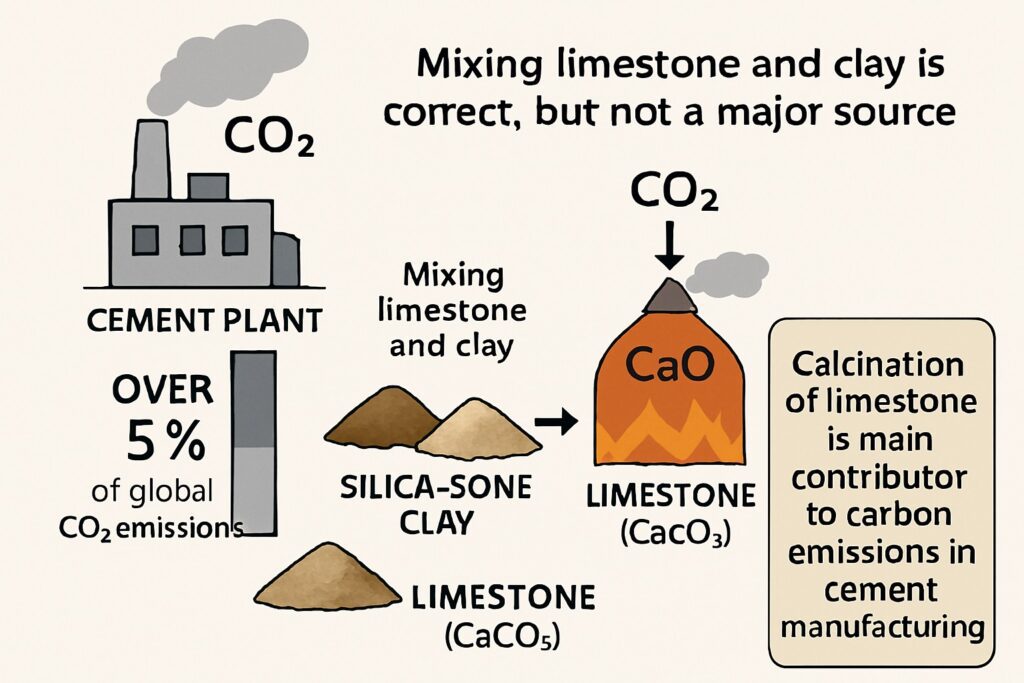
Q.12 Consider the following statements:
Statement I: At the 28th United Nations Climate Change Conference (COP28), India refrained from signing the ‘Declaration on Climate and Health’.
Statement II: The COP28 Declaration on Climate and Health is a binding declaration; and if signed, it becomes mandatory to decarbonize the health sector.
Statement III: If India’s health sector is decarbonized, the resilience of its health-care system may be compromised.
Which one of the following is correct in respect of the above statements?
a) Both Statement II and Statement III are correct and both of them explain Statement I
b) Both Statement II and Statement III are correct but only one of them explains Statement I
c) Only one of the Statements II and III is correct and that explains Statement I
d) Neither Statement II nor Statement III is correct
Correct answer: c) Only one of the Statements II and III is correct and that explains Statement I
Explanation:
Statement I is correct. India did not sign the ‘Declaration on Climate and Health’ at COP28.
Statement II is incorrect because the COP28 Declaration on Climate and Health is a non-binding declaration. It encourages action but does not impose any legal obligation or mandate on countries to decarbonize their health sectors.
Statement III is correct. One of the reasons cited for India’s hesitation was the concern that decarbonizing the health sector, especially in resource-limited areas, might compromise its resilience. For example, reducing emissions from health infrastructure could affect cold chains or power-dependent equipment in underserved regions.
Q.13 Consider the following statements:
Statement I: Scientific studies suggest that a shift is taking place in the Earth’s rotation and axis.
Statement II: Solar flares and associated coronal mass ejections bombarded the Earth’s outermost atmosphere with a tremendous amount of energy.
Statement III: As the Earth’s polar ice melts, the water tends to move towards the equator.
Which one of the following is correct in respect of the above statements?
a) Both Statement II and Statement III are correct and both of them explain Statement I
b) Both Statement II and Statement III are correct but only one of them explains Statement I
c) Only one of the Statements II and III is correct and that explains Statement I
d) Neither Statement II nor Statement III is correct
Correct answer: b) Both Statement II and Statement III are correct but only one of them explains Statement I
Explanation:
Statement I is correct. Scientific studies have shown that Earth’s axis and rotation are shifting, a phenomenon known as polar wander or true polar drift. This is partly due to mass redistribution on Earth’s surface, such as melting ice and groundwater depletion.
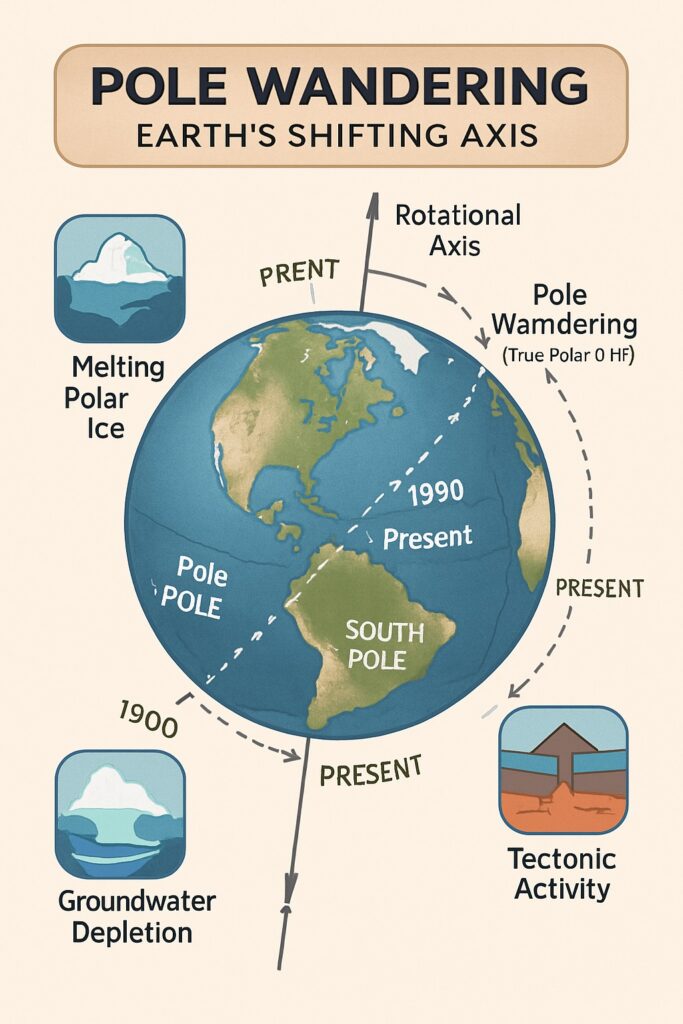
Statement II is correct, as solar flares and coronal mass ejections (CMEs) do release massive amounts of energy into the Earth’s upper atmosphere, but they do not significantly affect the planet’s rotation or axis. Their main effects are on satellites, communications, and power grids, not on Earth’s physical spin.

Statement III is also correct, and it does explain Statement I. As polar ice melts due to global warming, water redistributes toward the equator, changing Earth’s mass distribution, which affects its rotational axis. This process has been documented by studies using satellite data such as from NASA’s GRACE mission.
Therefore, both Statement II and III are correct, but only Statement III explains Statement I. Hence, the correct answer is b) Both Statement II and Statement III are correct but only one of them explains Statement I.
Q.14 Consider the following statements:
Statement I: Article 6 of the Paris Agreement on climate change is frequently discussed in global discussions on sustainable development and climate change.
Statement II: Article 6 of the Paris Agreement on climate change sets out the principles of carbon markets.
Statement III: Article 6 of the Paris Agreement on climate change intends to promote inter-country non-market strategies to reach their climate targets.
Which one of the following is correct in respect of the above statements?
a) Both Statement II and Statement III are correct and both of them explain Statement I
b) Both Statement II and Statement III are correct but only one of them explains Statement I
c) Only one of the Statements II and III is correct and that explains Statement I
d) Neither Statement II nor Statement III is correct
Correct answer: a) Both Statement II and Statement III are correct and both of them explain Statement I
Explanation:
Statement I is correct because Article 6 of the Paris Agreement is a key focus in international climate negotiations, especially in the context of sustainable development, carbon markets, and collaborative efforts to reduce emissions.
Statement II is correct because Article 6 outlines the principles of international carbon markets, including mechanisms that allow countries to trade emission reductions through cooperative approaches, thereby achieving cost-effective mitigation outcomes.
Statement III is also correct because Article 6.8 of the Paris Agreement explicitly refers to non-market approaches, encouraging countries to engage in collaborative strategies that do not involve carbon trading, such as technology sharing, capacity building, and climate finance.
Since both Statement II and III accurately describe aspects of Article 6 and both help explain why it is frequently discussed in global climate and sustainability forums, the correct answer is a) Both Statement II and Statement III are correct and both of them explain Statement I.
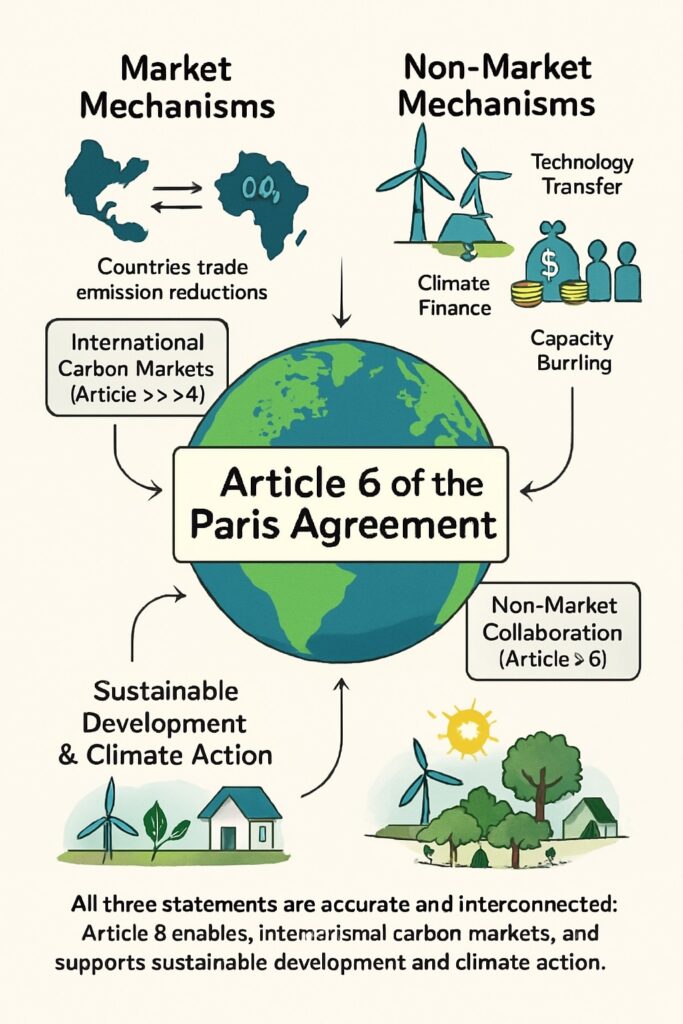
Q.15 Which one of the following launched the ‘Nature Solutions Finance Hub for Asia and the Pacific’?
a) The Asian Development Bank (ADB)
b) The Asian Infrastructure Investment Bank (AIIB)
c) The New Development Bank (NDB)
d) The International Bank for Reconstruction and Development (IBRD)
Correct Answer: a) The Asian Development Bank (ADB)
Explanation: The Nature Solutions Finance Hub for Asia and the Pacific was launched by the Asian Development Bank (ADB) during COP28 in 2023. This initiative aims to scale up investments in nature-based solutions to address climate change and biodiversity challenges in the Asia-Pacific region. It seeks to mobilize at least USD 2 billion for projects that protect and restore ecosystems while contributing to sustainable development.
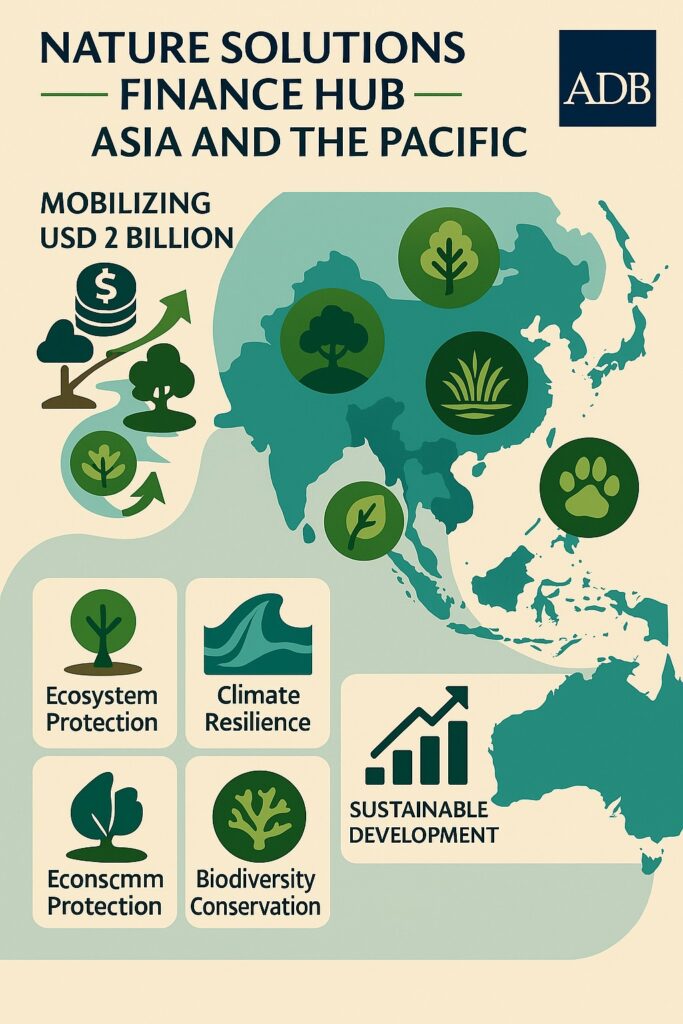
Q.16 With reference to ‘Direct Air Capture’, an emerging technology, which of the following statements is/are correct?
I. It can be used as a way of carbon sequestration.
II. It can be a valuable approach for plastic production and in food processing.
III. In aviation, it can be a source of carbon for combining with hydrogen to create synthetic low-carbon fuel.
Select the correct answer using the code given below.
a) I and II only
b) III only
c) I, II and III
d) None of the above statements is correct
Correct Answer: c) I, II and III
Explanation: Direct Air Capture (DAC) is a technology that removes carbon dioxide (CO₂) directly from the atmosphere. It is considered a form of carbon sequestration because the captured CO₂ can either be stored underground or utilized in other industrial applications. Therefore, statement I is correct.
The captured CO₂ can also be used in the production of plastics, carbonated beverages, and in food processing, which supports statement II.
In the aviation sector, DAC provides a source of CO₂ that can be combined with hydrogen to create synthetic fuels, offering a pathway to reduce emissions from hard-to-abate sectors like aviation. Hence, statement III is also correct. All three statements accurately describe the potential applications of Direct Air Capture technology.

Q.17 Regarding Peacock tarantula (Gooty tarantula), consider the following statements:
I. It is an omnivorous crustacean.
II. Its natural habitat in India is only limited to some forest areas.
III. In its natural habitat, it is an arboreal species.
Which of the statements given above is/are correct?
a) I only
b) I and III
c) II only
d) II and III
Correct Answer: d) II and III
Explanation: The Peacock tarantula, also known as the Gooty tarantula (Poecilotheria metallica), is a species of spider, not a crustacean, and therefore statement I is incorrect. It is not omnivorous, as it primarily preys on insects and other small animals. This species is native to a very limited forest area in Andhra Pradesh, India, and is considered endangered due to habitat loss. Thus, statement II is correct. In its natural habitat, it is arboreal, meaning it lives in trees and uses its agility and silk-spinning ability to navigate and build shelters in the forest canopy, making statement III also correct. Therefore, the correct answer is d) II and III.

Q.18 Consider the following statements:
I. Carbon dioxide (CO₂) emissions in India are less than 0.5 t CO₂ per capita.
II. In terms of CO₂ emissions from fuel combustion, India ranks second in the Asia–Pacific region.
III. Electricity and heat producers are the largest sources of CO₂ emissions in India.
Which of the statements given above is/are correct?
a) I and III only
b) II only
c) II and III only
d) I, II and III
Correct Answer: c) II and III only
Explanation:
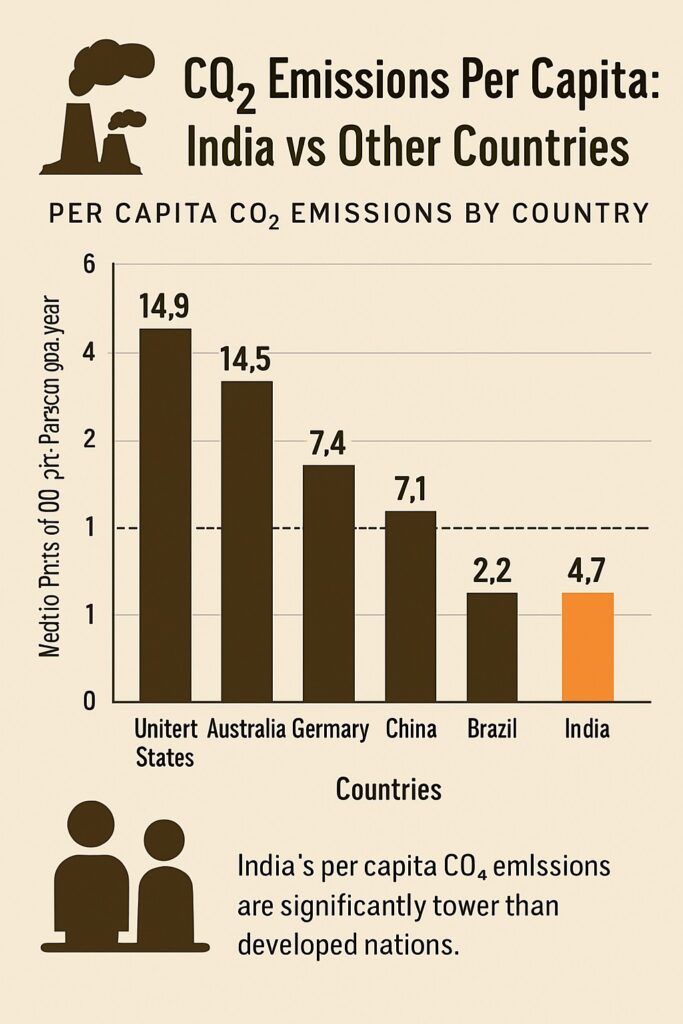
Statement I is incorrect. India’s CO₂ emissions per capita are much higher than 0.5 tonnes—current estimates 4.7 tonnes per person.
Statement II is correct. India ranks second in the Asia–Pacific region for CO₂ emissions from fuel combustion, after China.
Statement III is also correct. The electricity and heat production sector (dominated by coal-fired power plants) is the largest single source of CO₂ emissions in India, accounting for over 50% of energy-related CO₂ .
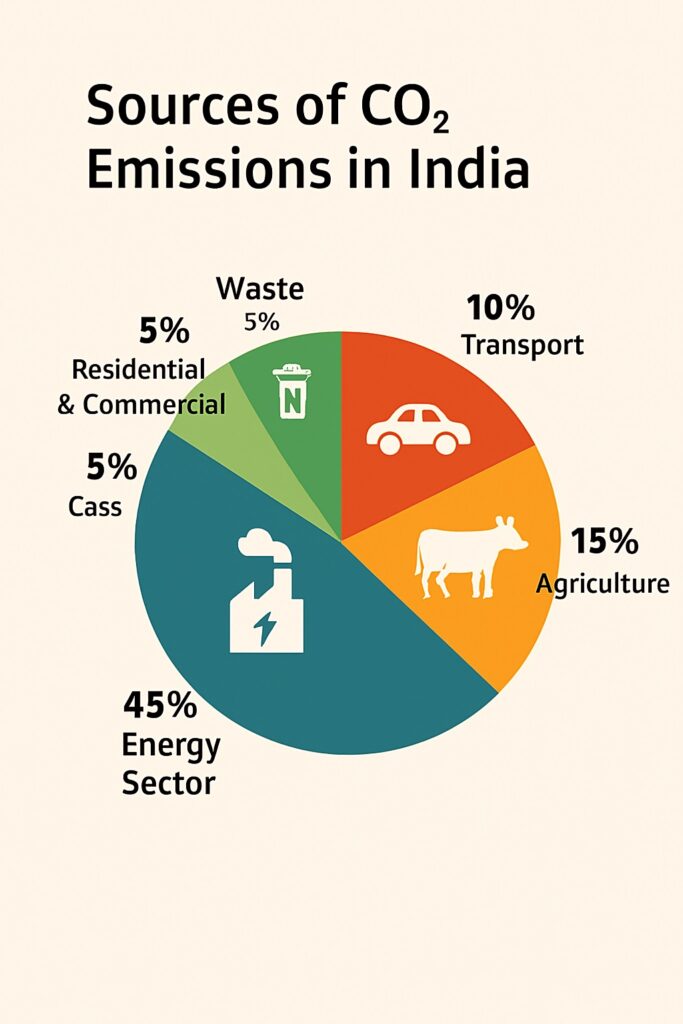
Q.19 Consider the following pairs:
Plant — Description
I. Cassava : Woody shrub
II. Ginger : Herb with pseudostem
III. Malabar spinach : Herbaceous climber
IV. Mint : Annual shrub
V. Papaya : Woody shrub
How many of the above pairs are correctly matched?
a) Only two
b) Only three
c) Only four
d) All the five
Correct Answer: b) Only three
Explanation:
Cassava is correctly described as a woody shrub, cultivated for its starchy tuberous roots.

Ginger is an herb that forms a pseudostem from the rolled bases of its leaves.
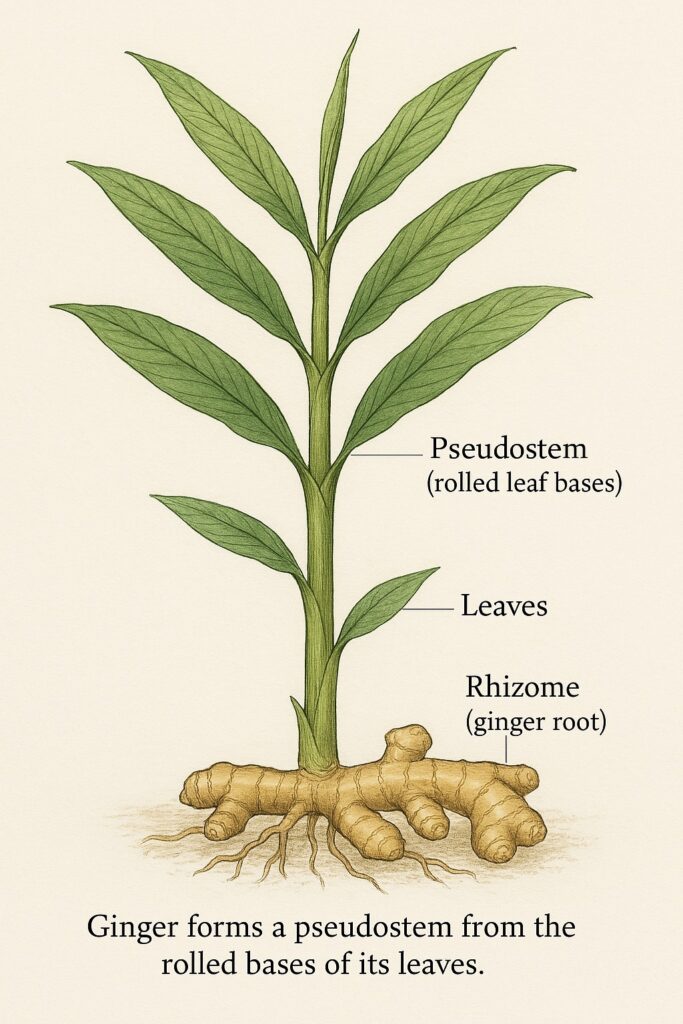
Malabar spinach is a herbaceous climber, commonly grown as a leafy vegetable.

Mint is not an annual shrub, it is a perennial herb, and it does not develop woody stems.

Papaya is also not a woody shrub; it is a giant herbaceous plant because it lacks true woody tissue.

Therefore, only three pairs (I, II, and III) are correctly matched.
Q.20 With reference to the planet Earth, consider the following statements:
I. Rain forests produce more oxygen than that produced by oceans.
II. Marine phytoplankton and photosynthetic bacteria produce about 50% of the world’s oxygen.
III. Well-oxygenated surface water contains several folds higher oxygen than that in atmospheric air.
Which of the statements given above is/are correct?
a) I and II
b) II only
c) I and III
d) None of the above statements is correct
Correct Answer: b) II only
Explanation:
Statement I is incorrect. While rainforests, especially the Amazon, are important oxygen producers, oceans actually produce more oxygen than terrestrial ecosystems. This is due to the presence of marine phytoplankton and photosynthetic microorganisms, which contribute significantly to global oxygen production.
Statement II is correct. It is estimated that marine phytoplankton, algae, and cyanobacteria contribute about 50% or more of the Earth’s oxygen through photosynthesis.

Statement III is incorrect. Well-oxygenated surface water does contain dissolved oxygen, but it is much less than the oxygen concentration in atmospheric air. Air contains about 21% oxygen, while even saturated surface water typically contains less than 1% oxygen by volume.
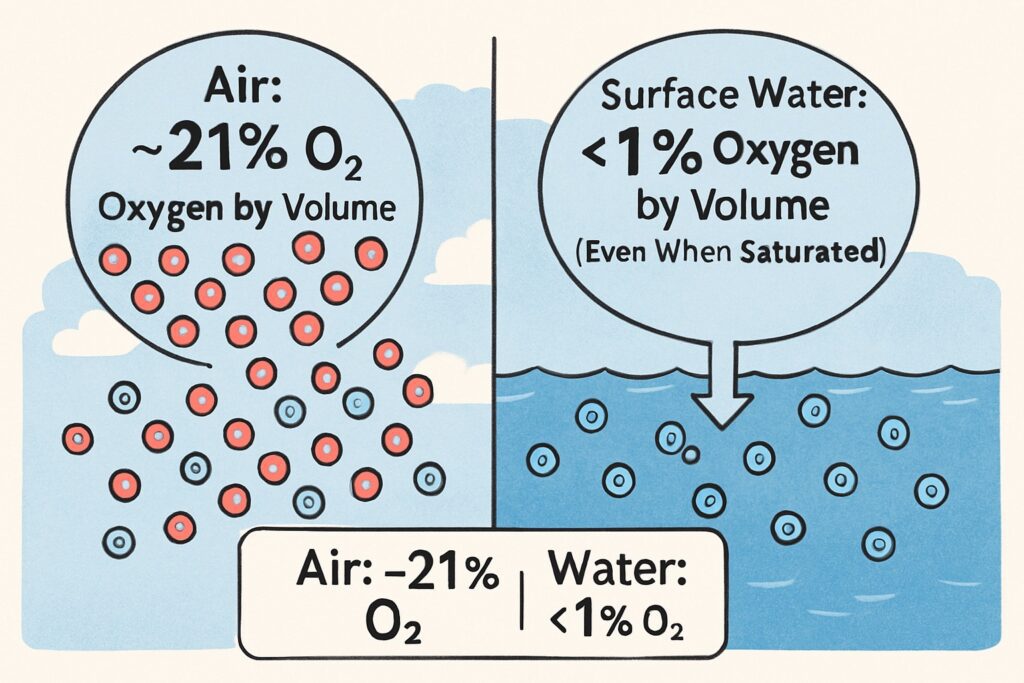
Therefore, only Statement II is correct.
Q.21 Consider the following statements about Raja Ram Mohan Roy:
I. He possessed great love and respect for the traditional philosophical systems of the East.
II. He desired his countrymen to accept the rational and scientific approach and the principle of human dignity and social equality of all men and women.
Which of the statements given above is/are correct?
a) I only
b) II only
c) Both I and II
d) Neither I nor II
Correct Answer: c) Both I and II
Explanation:
Statement I is correct. Raja Ram Mohan Roy was deeply influenced by ancient Indian philosophy, especially the Upanishads, and he had a strong admiration for Vedantic thought. While he opposed certain regressive social practices, he retained a deep respect for India’s traditional spiritual and philosophical heritage.
Statement II is also correct. He was a strong advocate of rationalism, scientific thinking, and social reform. He promoted human dignity, equality, women’s rights, and abolition of practices like Sati. He wanted Indians to embrace modern, liberal values rooted in reason and justice, along with their cultural heritage.
Thus, both statements are correct.
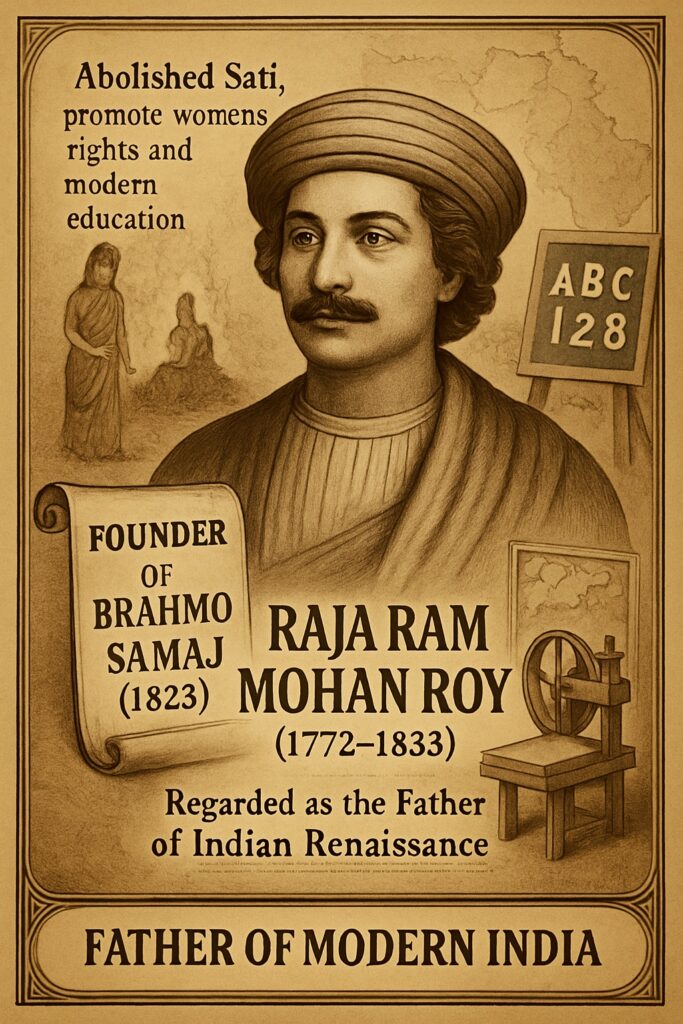
Q.22 Consider the following subjects with regard to Non-Cooperation Programme:
I. Boycott of law-courts and foreign cloth
II. Observance of strict non-violence
III. Retention of titles and honours without using them in public
IV. Establishment of Panchayats for settling disputes
How many of the above were parts of the Non-Cooperation Programme?
a) Only one
b) Only two
c) Only three
d) All the four
Correct Answer: c) Only three
Explanation:
Statement I is correct. The boycott of law-courts and foreign cloth was a central part of the Non-Cooperation Programme launched by Mahatma Gandhi in 1920.
Statement II is correct. Strict adherence to non-violence (Ahimsa) was a fundamental principle of the movement, as it was based on peaceful resistance and civil disobedience.
Statement III is incorrect. The programme called for the renunciation of titles and honours conferred by the British Government, not their retention—even privately.
Statement IV is correct. The establishment of Panchayats to resolve local disputes independently of British courts was encouraged as part of building Swaraj (self-rule) from the grassroots.
Hence, only statements I, II, and IV were part of the programme.

Q.23 The irrigation device called ‘Araghatta’ was
a) a water bag made of leather pulled over a pulley.
b) a large wheel with earthen pots tied to the outer ends of its spokes.
c) a larger earthen pot driven by bullocks.
d) a large water bucket pulled up by rope directly by hand.
Correct Answer: b) a large wheel with earthen pots tied to the outer ends of its spokes
Explanation: The Araghatta was an ancient Indian irrigation device that functioned as a water-lifting wheel. It consisted of a large vertical wheel with earthen pots or containers tied to the ends of its spokes. As the wheel rotated—often powered by animal or human effort—the pots dipped into the water source, filled up, and emptied the water into irrigation channels when they reached the top. This system enabled continuous lifting and distribution of water to agricultural fields.
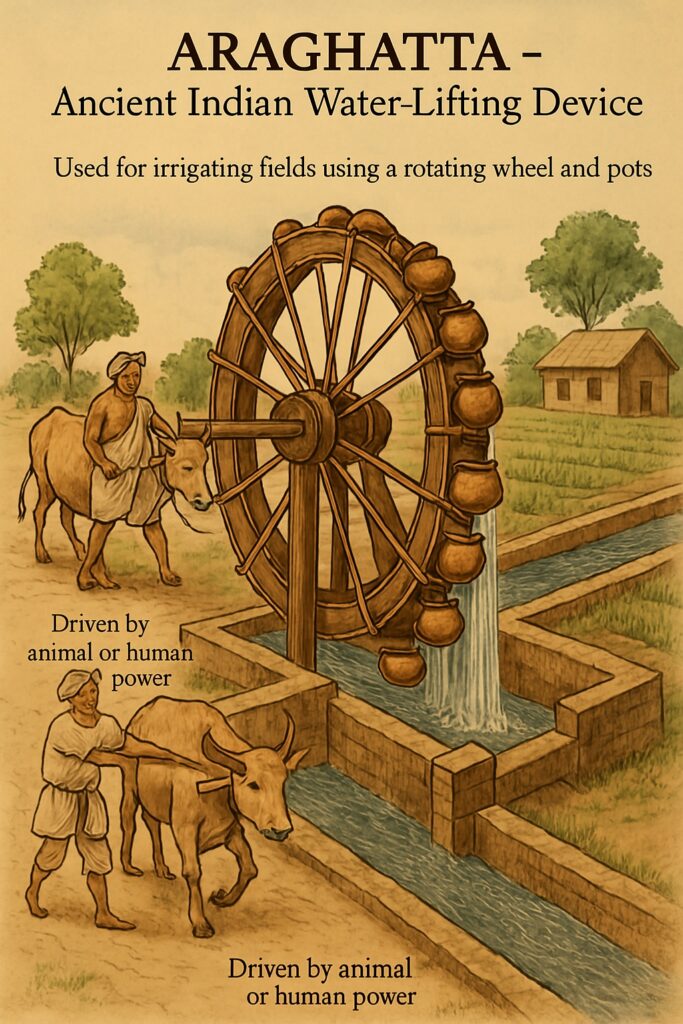
Q.24 Who among the following rulers in ancient India had assumed the titles ‘Mattavilasa’, ‘Vichitrachitta’, and ‘Gunabhara’?
a) Mahendravarman I
b) Simhavishnu
c) Narasimhavarman I
d) Simhavarman
Correct Answer: a) Mahendravarman I
Explanation: Mahendravarman I, a prominent ruler of the Pallava dynasty in the 7th century CE, was not only a powerful king but also a patron of art, literature, and architecture. He assumed several honorific titles, like:
- Mattavilasa (Lover of intoxicated play),
- Vichitrachitta (Curious-minded or one with a varied intellect), and
- Gunabhara (One who is full of virtues).
He was also the author of the Sanskrit play Mattavilasa Prahasana, a satirical drama. His reign marked a flourishing period of temple architecture and literary activity in South India.

Q.25 Fa-hien (Faxian), the Chinese pilgrim, travelled to India during the reign of
a) Samudragupta
b) Chandragupta II
c) Kumaragupta I
d) Skandagupta
Correct Answer: b) Chandragupta II
Explanation: Fa-hien (Faxian) was a Chinese Buddhist pilgrim who traveled to India in the early 5th century CE to collect Buddhist texts and observe the monastic practices. He arrived in India around 399 CE during the reign of Chandragupta II, one of the most celebrated rulers of the Gupta Empire.
Fa-hien’s travel accounts provide valuable insights into the social, religious, and economic conditions of India during Gupta rule. He praised the country for its peace, prosperity, and religious tolerance, particularly highlighting the flourishing state of Buddhism.

Q.26) Who among the following led a successful military campaign against the kingdom of Srivijaya, the powerful maritime State, which ruled the Malay Peninsula, Sumatra, Java and the neighbouring islands?
a) Amoghavarsha (Rashtrakuta)
b) Prataparudra (Kakatiya)
c) Rajendra I (Chola)
d) Vishnuvardhana (Hoysala)
Correct Answer: c) Rajendra I (Chola)
Explanation:
Rajendra I, the son of Rajaraja Chola I, led a remarkable naval expedition in 1025 CE against the Srivijaya Empire, a dominant maritime power in Southeast Asia that controlled trade in the region. His campaign marked the first major overseas military venture by an Indian ruler and demonstrated the naval strength of the Cholas.
Rajendra’s forces attacked Srivijaya’s ports in Sumatra and Malaya, weakening its monopoly over maritime trade. This successful campaign significantly enhanced the Chola Empire’s prestige and influence across the Bay of Bengal.
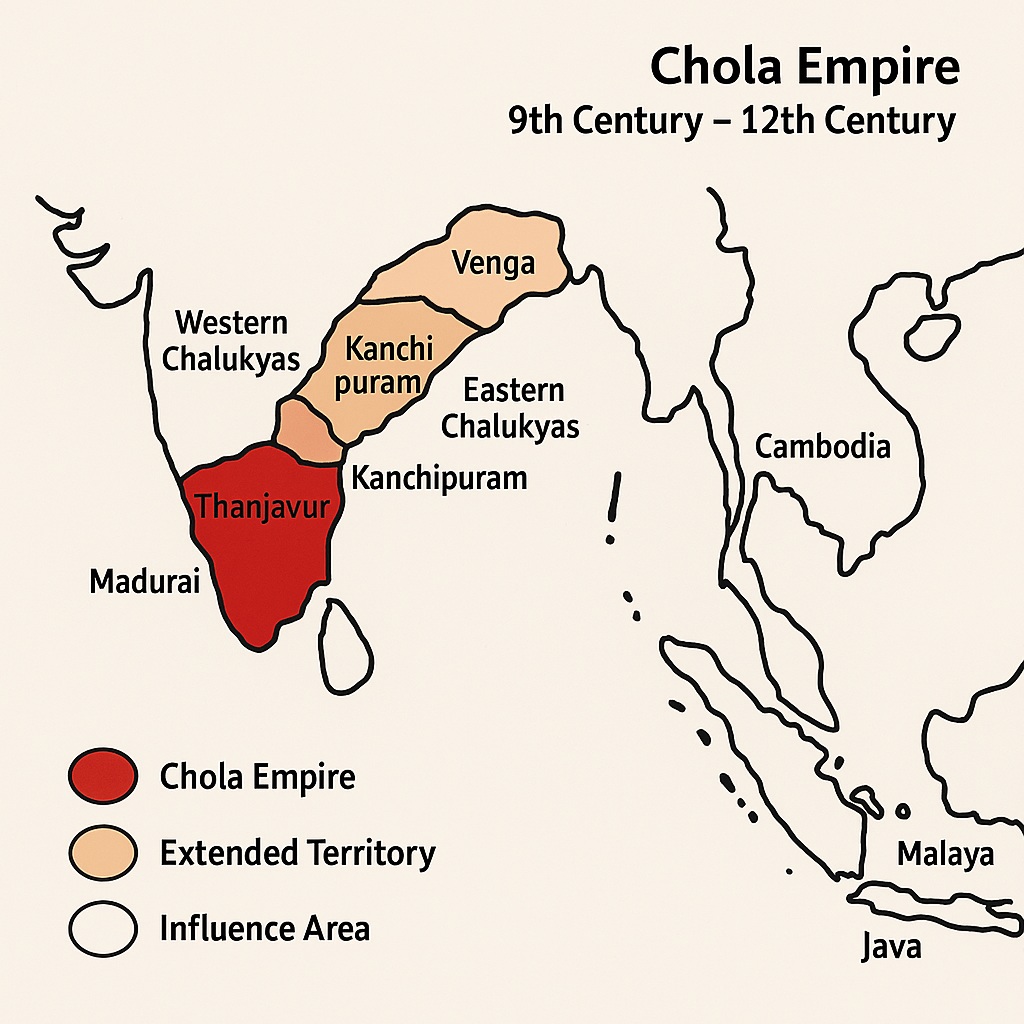
Q.27 With reference to ancient India (600–322 BC), consider the following pairs:
| Territorial Region | River Flowing in the Region |
|---|---|
| I. Asmaka | Godavari |
| II. Kamboja | Vipas |
| III. Avanti | Mahanadi |
| IV. Kosala | Sarayu |
How many of the pairs given above are correctly matched?
A. Only one
B. Only two
C. Only three
D. All the four
Ans: B. Only two
Solution:
Asmaka was a Mahajanapada located in the Deccan region, along the Godavari River, Hence I is correctly matched.
Kosala – Sarayu is also a correct match, as Kosala was centered around Ayodhya in eastern Uttar Pradesh and situated along the Sarayu River.
However, the match Kamboja – Vipas (Beas) is incorrect. Kamboja was located in the north-western frontier of the Indian subcontinent, likely in the region of present-day Afghanistan or Pakistan.
The Vipas or Beas River flows further east and does not pass through the Kamboja region. Likewise, the match Avanti – Mahanadi is also incorrect.
Avanti was centered around Ujjain in western Madhya Pradesh and was located along the Narmada River, not the Mahanadi, which flows through present-day Chhattisgarh and Odisha.
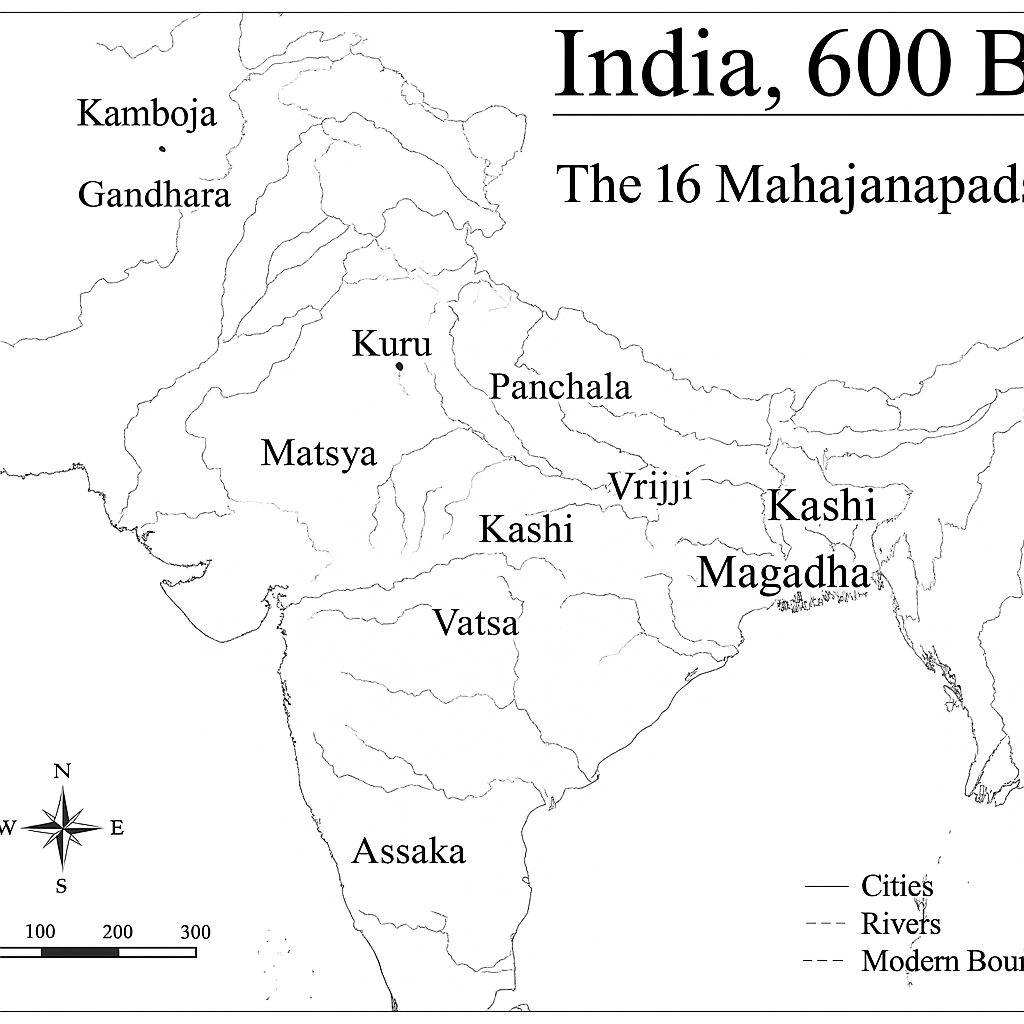
Q.28 The first Gandharva Mahavidyalaya, a music training school, was set up in 1901 by Vishnu Digambar Paluskar in
a) Delhi
b) Gwalior
c) Ujjain
d) Lahore
Answer: d) Lahore
Explanation: Vishnu Digambar Paluskar established the first Gandharva Mahavidyalaya in 1901 at Lahore (present-day Pakistan). His goal was to democratize music education and move it beyond the confines of royal courts and traditional hereditary musicians. This institution was the first of its kind to offer structured classical music training to the general public. Later, Gandharva Mahavidyalayas were opened in other cities like Delhi and Mumbai, but the original was founded in Lahore.
Q.29 Ashokan inscriptions suggest that the ‘Pradeshika’, ‘Rajuka’ and ‘Yukta’ were important officers at the
a) village-level administration
b) district-level administration
c) provincial administration
d) level of the central administration
Answer: b) district-level administration
Explanation: Ashokan inscriptions refer to several key administrative officers. The Pradeshika was in charge of touring and supervising district administration. The Rajuka acted like district magistrates, handling judicial and land revenue duties. The Yukta served as an accountant or subordinate officer responsible for revenue collection and records. All three operated at the district-level, managing law, order, and revenue matters.
Q.30 Consider the following statements in respect of the Non-Cooperation Movement:
I. The Congress declared the attainment of ‘Swaraj’ by all legitimate and peaceful means to be its objective.
II. It was to be implemented in stages with civil disobedience and non-payment of taxes for the next stage only if ‘Swaraj’ did not come within a year and the Government resorted to repression.
a) I only
b) II only
c) Both I and II
d) Neither I nor II
Answer: c) Both I and II
Explanation:
The Nagpur Session of the Indian National Congress in December 1920 adopted the Non-Cooperation Movement formally.
- The resolution explicitly stated that the goal of the Congress was the attainment of Swaraj by peaceful and legitimate means.
- The movement was to be executed in stages. Initially, it focused on boycotting titles, government institutions, foreign goods, and promoting khadi.
- Civil disobedience and refusal to pay taxes were conditional—to be introduced only if Swaraj was not achieved within a year and if the British government resorted to repression.
Hence, both statements are correct.
Q.31 With reference to investments, consider the following:
I. Bonds
II. Hedge Funds
III. Stocks
IV. Venture Capital
How many of the above are treated as Alternative Investment Funds
a) Only one
b) Only two
c) Only three
d) All the four
Answer: b) Only two
Explanation: Alternative Investment Funds refer to investment vehicles that pool funds and invest in assets other than traditional investment avenues like stocks and bonds.
- Hedge Funds are considered Alternative Investment Funds.
- Venture Capital is also a category under Alternative Investment Funds in India.
- Bonds are traditional debt instruments and are not treated as Alternative Investment Funds.
- Stocks are traditional equity investments and are also not considered Alternative Investment Funds.
Therefore, only Hedge Funds and Venture Capital qualify as Alternative Investment Funds.
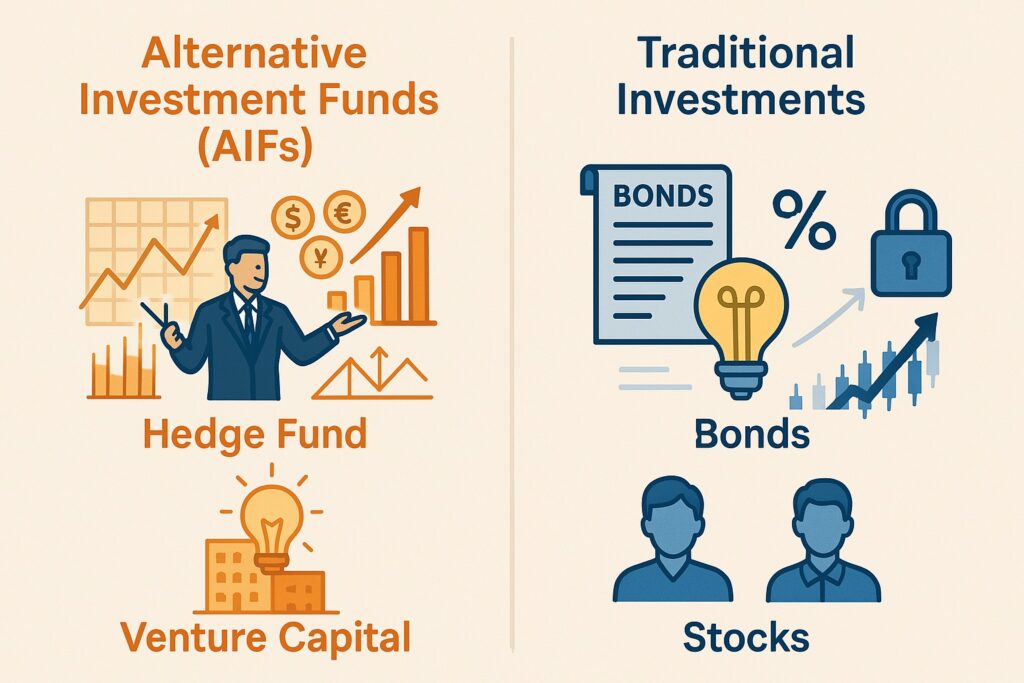
Q.32 Which of the following are the sources of income for the Reserve Bank of India?
I. Buying and selling Government bonds
II. Buying and selling foreign currency
III. Pension fund management
IV. Lending to private companies
V. Printing and distributing currency notes
Select the correct answer using the code given below.
a) I and II only
b) II, III and IV
c) I, III, IV and V
d) I, II and V
Answer: d) I, II and V
Explanation:
The Reserve Bank of India earns income through various sources.
Statement I is correct because RBI earns interest and profits from buying and selling government bonds during open market operations.

Statement II is correct since foreign exchange dealings generate income through valuation changes and arbitrage.
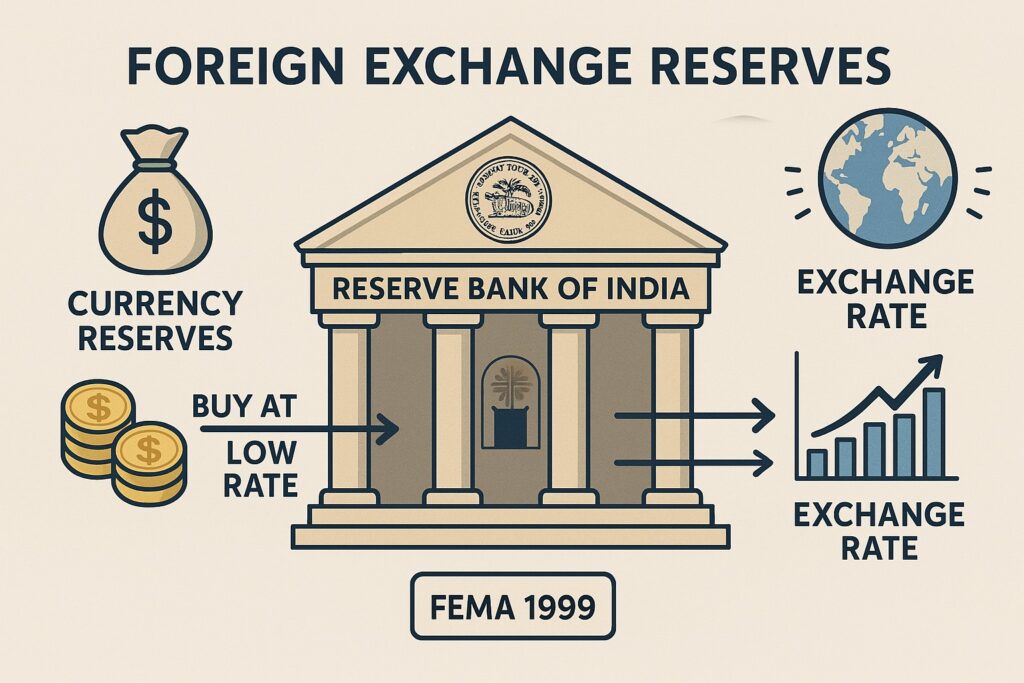
Statement III is incorrect as managing pension funds is not a regular revenue source for RBI.
Statement IV is incorrect because the RBI does not lend directly to private companies; it mainly lends to commercial banks.
Statement V is correct. Although printing currency notes involves cost, RBI earns seigniorage, the profit from the difference between the face value of money and its printing cost.
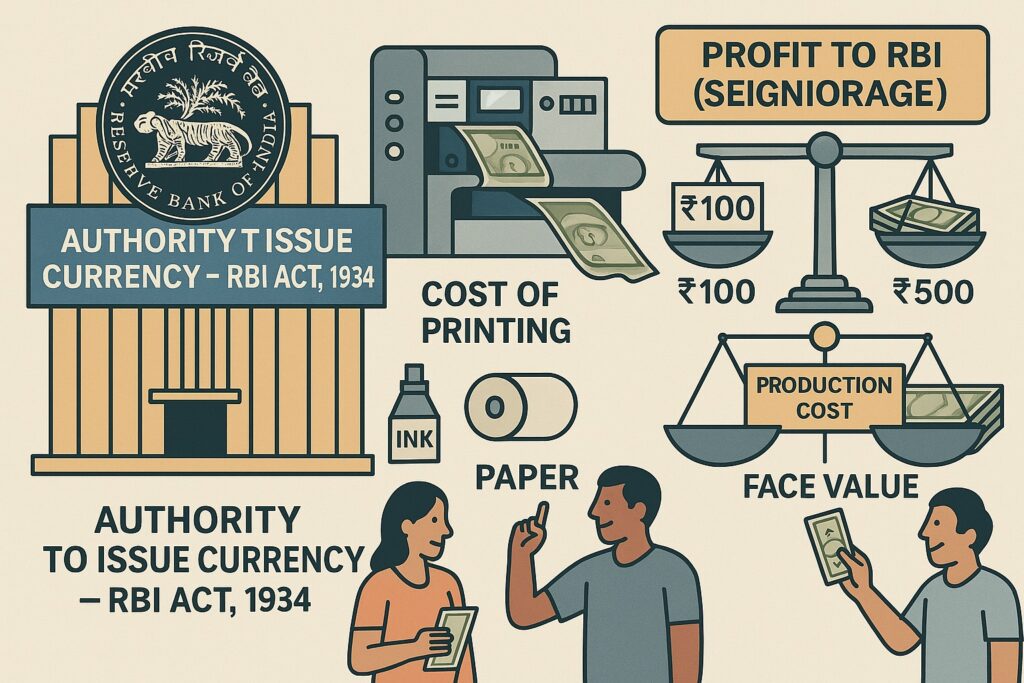
Q.33 With reference to the Government of India, consider the following information:
Organization – Some of its functions – It works under
I. Directorate of Enforcement – Enforcement of the Fugitive Economic Offenders Act, 2018 – Internal Security Division-I, Ministry of Home Affairs
II. Directorate of Revenue Intelligence – Enforces the provisions of the Customs Act, 1962 – Department of Revenue, Ministry of Finance
III. Directorate General of Systems and Data Management – Carrying out big data analytics to assist tax officers for better policy and nabbing tax evaders – Department of Revenue, Ministry of Finance
In how many of the above rows is the information correctly matched?
a) Only one
b) Only two
c) All the three
d) None
Answer: a) Only one
Explanation:
Row I is incorrect: The Directorate of Enforcement enforces the Fugitive Economic Offenders Act, 2018, but it operates under the Department of Revenue, Ministry of Finance, not under the Ministry of Home Affairs.
Row II is correct: The Directorate of Revenue Intelligence functions under the Department of Revenue, Ministry of Finance, and enforces the Customs Act, 1962.
Row III is incorrect: Although the Directorate General of Systems and Data Management works under the Department of Revenue, its role is primarily related to information technology support for the CBIC, not directly involved in tax policy formation or enforcement through big data analytics.
Therefore, only one row (Row II) is correctly matched.
Q34. Consider the following statements
I. The Reserve Bank of India mandates all the listed companies in India to submit a Business Responsibility and Sustainability Report (BRSR).
II. In India, a company submitting a BRSR makes disclosures in the report that are largely non-financial in nature.
Which of the statements given above is/are correct?
(a) I only
(b) II only
(c) Both I and II
(d) Neither I nor II
Answer: (b) II only
Explanation:
- Statement I is incorrect: The Reserve Bank of India (RBI) does not mandate the submission of the Business Responsibility and Sustainability Report (BRSR). Instead, it is regulated by the Securities and Exchange Board of India (SEBI) for listed companies as part of corporate governance norms.
- Statement II is correct: The BRSR includes non-financial disclosures related to environmental, social, and governance (ESG) aspects, such as energy usage, workforce diversity, human rights, and community initiatives. It helps stakeholders assess a company’s sustainability and ethical practices beyond its financial performance.
Q35. Consider the following statements:
Statement I : In India, income from allied agricultural activities like poultry farming and wool rearing in rural areas is exempted from any tax.
Statement II : In India, rural agricultural land is not considered a capital asset under the provisions of the Income-tax Act, 1961.
Which one of the following is correct in respect of the above statements?
(a) Both Statement I and Statement II are correct and Statement II explains Statement I
(b) Both Statement I and Statement II are correct but Statement II does not explain Statement I
(c) Statement I is correct Statement II is not correct but
(d) Statement I is not correct but Statement II is correct
Correct answer: (d) Statement I is not correct but Statement II is correct
Explanation:
- Statement I – Incorrect: Allied agricultural activities such as poultry farming, dairy farming, wool rearing, etc., do not qualify as agricultural income under the Income-tax Act, 1961. Even if carried out in rural areas, income from these activities is taxable and not exempt.
- Statement II – Correct: As per Section 2(14)(iii) of the Income-tax Act, rural agricultural land is not considered a capital asset. Therefore, any gains from its sale are not subject to capital gains tax, making it exempt under those provisions.
Q36. Consider the following statements:
I. India has joined the Minerals Şecurity Partnership as a member.
II. India is a resource-rich country in all the 30 critical minerals that it has identified.
III. The Parliament in 2023 has amended the Mines and Minerals (Development and Regulation) Act, 1957 empowering the Central Government to exclusively auction mining lease and composite license for certain critical minerals.
Which of the statements given above are correct?
(a) I and II only
(b) II and III only
(c) I and III only
(d) I, II and III
Correct answer: (c) I and III only
Explanation:
- Statement I – Correct: India formally joined the Minerals Security Partnership (MSP) in June 2023. This international initiative is aimed at ensuring reliable supply chains for critical minerals essential for clean energy, semiconductors, and other high-tech sectors.
- Statement II – Incorrect: While India has identified 30 critical minerals, it is not resource-rich in all of them. In fact, for several minerals like lithium, cobalt, and nickel, India relies heavily on imports and is actively seeking exploration partnerships and investments to meet domestic demand.
- Statement III – Correct: In 2023, the Mines and Minerals (Development and Regulation) Amendment Act was passed, empowering the Central Government to conduct exclusive auctions for mining leases and composite licenses of certain critical minerals, streamlining the regulatory framework and boosting India’s self-sufficiency.
37. Consider the following statements:
Statement I: As regards returns from an investment in a company, generally, bondholders are considered to be relatively at lower risk than stockholders.
Statement II: Bondholders are lenders to a company whereas stockholders are its owners.
Statement III: For repayment purpose, bondholders are prioritized over stockholders by a company.
Which one of the following is correct in respect of the above statements?
(a) Both Statement II and Statement III are correct and both of them explain Statement I
(b) Both Statement I and Statement II are correct and Statement I explains Statement II
(c) Only one of the Statements II and III is correct and that explains Statement I
(d) Neither Statement II nor Statement III is correct
Answer: (a) Both Statement II and Statement III are correct and both of them explain Statement I
Explanation:
-
Statement I is correct. Bondholders face less risk than stockholders because they receive fixed interest payments and have a higher claim on assets in case the company defaults.
-
Statement II is correct. Bondholders are creditors (lenders), while stockholders are part-owners of the company. This distinction explains the risk difference.
-
Statement III is correct. In case of liquidation, bondholders are repaid before stockholders, further reducing their financial risk.
Therefore, Statements II and III are correct, and both help explain why Statement I is true.
38. Consider the following statements:
I. India accounts for a very large portion of all equity option contracts traded globally thus exhibiting a great boom.
II. India’s stock market has grown rapidly in the recent past even overtaking Hong Kong’s at some point of time.
III. There is no regulatory body either to warn the small investors about the risks of options trading or to act on unregistered financial advisors in this regard.
Which of the statements given above are correct?
(a) I and Il only
(b) II and III only
(c) I and III only
(d) I, II and III
Answer: (a) I and II only
Explanation:
Statement I – Correct: India has indeed become a global leader in equity options trading. As of recent data, NSE (National Stock Exchange) in India accounts for a significant share of global equity derivatives volume, particularly in index options, driven by retail investor interest and algorithmic trades.
Statement II – Correct: India’s stock market has surpassed Hong Kong’s in terms of market capitalization during late 2023, making it the fourth-largest stock market globally after the U.S., China, and Japan. This reflects robust growth in domestic investments and resilience in economic fundamentals.
Statement III – Incorrect: Contrary to this statement, India does have regulatory bodies in place:
-
- SEBI (Securities and Exchange Board of India) actively monitors and regulates trading practices,
- It also issues advisories regarding risks in options trading,
- SEBI has taken action against unregistered investment advisors and continuously works on investor awareness programs.
Q 39. Consider the following statements:
Statement I: Circular economy reduces the emissions of greenhouse gases.
Statement II: Circular economy reduces the use of raw materials as inputs.
Statement III: Circular economy reduces wastage in the production process.
Which one of the following is correct in respect of the above statements?
(a) Both Statement II and Statement III are correct and both of them explain Statement I
(b) Both Statement II and Statement III are correct but only one of them explains Statement I
(c) Only one of the Statements II and III is correct and that explains Statement I
(d) Neither Statement II nor Statement III is correct
Answer: (a) Both Statement II and Statement III are correct and both of them explain Statement I
Explanation:
- A circular economy is a model focused on minimizing waste and maximizing the reuse of resources. Unlike the linear “take-make-dispose” model, it promotes a closed-loop system.
- Statement I is true because circular economy practices lead to reduced greenhouse gas emissions, primarily by lowering the demand for resource extraction and energy-intensive production.
- Statement II is true since reducing the use of virgin raw materials is a key goal of the circular economy. This reduces environmental degradation and energy consumption.
- Statement III is also true. A circular economy emphasizes efficient resource use, which leads to lower waste generation during the production process.
- Since both Statement II and Statement III directly contribute to explaining how the circular economy reduces emissions (Statement I), the correct option is (a).
Q 40. Consider the following statements:
I. Capital receipts create a liability or cause a reduction in the assets of the Government.
II. Borrowings and disinvestment are capital receipts.
III. Interest received on loans creates a liability of the Government.
Which of the statements given above are correct?
(a) I and II only
(b) II and III only
(c) I and III only
(d) I, II and III
Answer: (a) I and II only
Explanation:
- Statement I is correct:
Capital receipts are those receipts that either create a liability (like borrowings) or reduce assets (like disinvestment of PSUs or recovery of loans). - Statement II is correct:
Borrowings (which create a liability) and disinvestment (which reduces assets) are classic examples of capital receipts. - Statement III is incorrect:
Interest received on loans is a revenue receipt, not a capital receipt. Also, it does not create a liability; rather, it is an income for the government.
Therefore, the correct option is (a) I and II only.
41. Consider the following countries:
I. Austria
II. Bulgaria
III. Croatia
IV. Serbia
V. Sweden
VI. North Macedonia
How many of the above are members of the North Atlantic Treaty Organization?
(a) Only three
(b) Only four
(c) Only five
(d) All the six
Answer: (b) Only four
Explanation:
- Austria – Not a NATO member; it follows a policy of neutrality.
- Bulgaria – NATO member since 2004.
- Croatia – NATO member since 2009.
- Serbia – Not a NATO member; maintains military neutrality.
- Sweden – Recently became a NATO member in 2024.
- North Macedonia – NATO member since 2020.
Thus, the four NATO members are Bulgaria, Croatia, Sweden, and North Macedonia.
Therefore, the correct option is (b) Only four.
Q 42. Consider the following countries:
I. Bolivia
II. Brazil
III. Colombia
IV. Ecuador
V. Paraguay
VI. Venezuela
Andes mountains pass through how many of the above countries?
(a) Only two
(b) Only three
(c) Only four
(d) Only five
Answer: (d) Only five
Explanation:
The Andes Mountains, the longest continental mountain range, run along the western coast of South America and pass through the following countries:
- Bolivia – The Andes traverse the western part of the country.
- Colombia – The Andes split into three ranges (cordilleras) in Colombia.
- Ecuador – The Andes run centrally through the country.
- Venezuela – The northern extension of the Andes (Cordillera de Mérida) reaches into Venezuela.
- Brazil – Does not contain any part of the Andes; located to the east of the mountain range.
- Paraguay – Not crossed by the Andes.
Therefore, the Andes Mountains pass through five of the listed countries.
Correct option: (d) Only five.
43. Consider the following water bodies:
I. Lake Tanganyika
II. Lake Tonlé Sap
III. Patos Lagoon
Through how many of them does the equator pass?
(a) Only one
(b) Only two
(c) All the three
(d) None
Answer: (d) None
Explanation:
-
Lake Tanganyika: Although it is located near the Equator in Central Africa, the Equator passes just north of it, not through the lake itself.
-
Lake Tonlé Sap: Located in Cambodia, which lies entirely north of the Equator.
-
Patos Lagoon: Situated in southern Brazil, well south of the Equator.
Therefore, none of these water bodies lie on the Equator.
Correct option: (d) None.
44. Consider the following statements about turmeric during the year 2022-23:
I. India is the largest producer and exporter of turmeric in the world.
II. More than 30 varieties of turmeric are grown in India.
III. Maharashtra, Telangana, Karnataka and Tamil Nadu are major turmeric producing States in India.
(a) I and II only
(b) II and III only
(c) I and III only
(d) I, II and III
Answer: (d) I, II and III
Explanation:
Statement I is correct:
India accounted for the highest production and export of turmeric in the world during 2022-23. It led both in volume and value terms, making it the largest global player in turmeric.
Statement II is correct:
India cultivates more than 30 varieties of turmeric across various agro-climatic zones. These varieties vary in terms of color, curcumin content, and yield.
Statement III is correct:
Maharashtra, Telangana, Karnataka, and Tamil Nadu are among the leading turmeric-producing states in India, contributing significantly to the total national output.
Therefore, the correct option is (d) I, II and III.
45. Which of the following are the evidences of the phenomenon of continental drift?
I. The belt of ancient rocks from Brazil coast matches with those from Western Africa.
II. The gold deposits of Ghana are derived from the Brazil plateau when the two continents lay side by side.
III. The Gondwana system of sediments from India is known to have its counterparts in six different landmasses of the Southern Hemisphere.
Select the correct answer using the code given below.
(a) I and III only
(b) I and II only
(c) I, II and III
(d) II and III only
Answer: (c) I, II and III
Explanation:
- Statement I is correct: The matching of ancient rock formations (such as the Precambrian rocks) along the coasts of Brazil and Western Africa is a classic piece of geological evidence for continental drift proposed by Alfred Wegener.
- Statement II is correct: The similarity in mineral deposits, such as gold in Ghana and those in Brazil, supports the idea that the continents were once joined, allowing for common mineral belts.
- Statement III is correct: The Gondwana system of sediments found in India has equivalents in regions of Africa, South America, Antarctica, Australia, and Madagascar, all part of the former supercontinent Gondwanaland.
All three statements are valid evidence supporting the continental drift theory, hence the correct answer is (c) I, II and III.
Q46. Consider the following statements:
Statement I: The amount of dust particles in the atmosphere is more in subtropical and temperate areas than in equatorial and polar regions.
Statement II: Subtropical and temperate areas have less dry winds.
Which one of the following is correct in respect of the above statements?
(a) Both Statement I and Statement II are correct and Statement II explains Statement I
(b) Both Statement I and Statement II are correct but Statement II does not explain Statement I
(c) Statement I is correct but Statement II is not correct
(d) Statement I is not correct but Statement II is correct
Answer: (c) Statement I is correct but Statement II is not correct
Explanation:
- Statement I is correct: Subtropical and temperate regions tend to have more dust particles in the atmosphere compared to equatorial and polar regions. This is primarily due to greater landmass, dry conditions, and prevailing winds which lift dust into the atmosphere.
- Statement II is not correct: Subtropical areas, particularly the desert belts (like Sahara, Arabian Desert, etc.), are characterized by dry winds, not less. These dry winds are a major cause of high dust content.
Hence, Statement I is correct, but Statement II is incorrect, making the correct option (c).
Q47. Consider the following statements:
Statement I: In January, in the Northern Hemisphere, the isotherms bend equatorward while crossing the landmasses, and poleward while crossing the oceans.
Statement II: In January, the air over the oceans is warmer than that over the landmasses in the Northern Hemisphere.
Which one of the following is correct in respect of the above statements?
(a) Both Statement I and Statement II are correct and Statement II explains Statement I
(b) Both Statement I and Statement II are correct but Statement II does not explain Statement I
(c) Statement I is correct but Statement II is not correct
(d) Statement I is not correct but Statement II is correct
Answer: (a) Both Statement I and Statement II are correct and Statement II explains Statement I
Explanation:
- Statement I is correct: Isotherms (lines of equal temperature) bend equatorward over cold continents and poleward over relatively warmer oceans in January (Northern Hemisphere winter).
- Statement II is correct: This pattern occurs because landmasses cool faster than oceans in winter, so air above oceans stays warmer.
Thus, Statement II explains Statement I—the temperature contrast between land and ocean influences the isotherm patterns.
Hence, the correct answer is (a).
48. Consider the following statements:
Statement I: In the context of effect of water on rocks, chalk is known as a very permeable rock whereas clay is known as quite an impermeable or least permeable rock.
Statement II: Chalk is porous and hence can absorb water.
Statement III: Clay is not at all porous.
Which one of the following is correct in respect of the above statements?
(a) Both Statement II and Statement III are correct and both of them explain Statement I
(b) Both Statement II and Statement III are correct but only one of them explains Statement I
(c) Only one of the Statements II and III is correct and that explains Statement I
(d) Neither Statement II nor Statement III is correct
Answer: (b) Both Statement II and Statement III are correct but only one of them explains Statement I
Explanation:
- Statement I is correct: Chalk is highly permeable due to its porosity, while clay is impermeable or least permeable because water cannot easily pass through it.
- Statement II is correct: Chalk is porous and can absorb water, which explains its permeability.
- Statement III is also correct in practical terms—clay is very low in porosity and permeability, though technically it may have micropores. However, it does not allow water to pass through easily, so it’s effectively impermeable.
Only Statement II directly explains why chalk is permeable and hence supports Statement I.
Statement III is accurate but does not directly explain Statement I (since permeability is about movement, not just porosity).
Therefore, the correct answer is (b).
49. Consider the following statements:
I. Without the atmosphere, temperature would be well below freezing point everywhere on the Earth’s surface.
II. Heat absorbed and trapped by the atmosphere maintains our planet’s average temperature.
III. Atmosphere’s gases, like carbon dioxide, are particularly good at absorbing and trapping radiation.
Which of the statements given above are correct?
(a) I and III only
(b) I and II only
(c) I, II and III
(d) II and III only
Answer: (c) I, II and III
Explanation:
- Statement I is correct: Without an atmosphere, Earth would lose heat rapidly and experience extremely cold temperatures, much below freezing point, especially at night.
- Statement II is correct: The greenhouse effect caused by gases in the atmosphere traps heat, which helps maintain a stable average surface temperature suitable for life.
- Statement III is correct: Greenhouse gases like carbon dioxide (CO₂), methane (CH₄), and water vapor are effective at absorbing and re-radiating infrared radiation, keeping the planet warm.
Therefore, all three statements are correct.
50. Consider the following statements about the Rashtriya Gokul Mission:
I. It is important for the upliftment of rural poor as majority of low producing indigenous animals are with small and marginal farmers and landless labourers.
II. It was initiated to promote indigenous cattle and buffalo rearing and conservation in a scientific and holistic manner.
Which of the statements given above is/are correct?
(a) I only
(b) II only
(c) Both I and II
(d) Neither I nor II
Answer: (c) Both I and II
Explanation:
- Statement I is correct: The Rashtriya Gokul Mission plays a key role in improving the economic conditions of small and marginal farmers and landless laborers, as they typically own indigenous cattle with lower productivity. Enhancing the quality of these animals uplifts rural livelihoods.
- Statement II is correct: The mission was launched by the Government of India to promote breeding and conservation of indigenous breeds of cattle and buffaloes using scientific and holistic practices.
51. Consider the following statements:
I. Panchayats at the intermediate level exist in all States.
II. To be eligible to be a Member of a Panchayat at the intermediate level, a person should attain the age of thirty years.
III. The Chief Minister of a State constitutes a commission to review the financial position of Panchayats at the intermediate levels and to make recommendations regarding the distribution of net proceeds of taxes and duties, leviable by the State, between the State and Panchayats at the intermediate level.
Which of the statements given above are not correct?
(a) I and II only
(b) II and III only
(c) I and III only
(d) I, II and III
Answer: (d) I, II and III
Explanation:
- Statement I is incorrect: Panchayats at the intermediate level do not exist in all States. As per the 73rd Constitutional Amendment, states with populations below 20 lakhs may not have intermediate-level Panchayats.
- Statement II is incorrect: The minimum age to be a member of a Panchayat is 21 years, not 30 years (Article 243F).
- Statement III is incorrect: The Governor, not the Chief Minister, constitutes the State Finance Commission every 5 years (Article 243-I) to review the financial position of Panchayats.
Hence, all three statements are not correct.
52. Consider the following statements in respect of BIMSTEC:
I. It is a regional organization consisting of seven member States till January 2025.
II. It came into existence with the signing of the Dhaka Declaration, 1999.
III. Bangladesh, India, Sri Lanka, Thailand and Nepal are founding member States of BIMSTEC.
IV. In BIMSTEC, the subsector of tourism is being led by India.
Which of the statements given above is/are correct?
(a) I and II
(b) II and III
(c) I and IV
(d) I only
Answer: (d) I only
Statement I: BIMSTEC is a regional organization with seven member states: Bangladesh, Bhutan, India, Myanmar, Nepal, Sri Lanka, and Thailand. This composition has remained unchanged through January 2025.
Statement II: BIMSTEC was established through the Bangkok Declaration in 1997, not the Dhaka Declaration of 1999.
Statement III: The founding members were Bangladesh, India, Sri Lanka, and Thailand. Nepal joined later in 2004, so it is not a founding member.
Statement IV: India previously led the tourism sector, but after the reorganization of BIMSTEC sectors, Nepal now leads the broader “People-to-People Contact” sector, which includes tourism.
53. Who amongst the following are members of the Jury to select the recipient of ‘Gandhi Peace Prize’?
I. The President of India
II. The Prime Minister of India
III. The Chief Justice of India
IV. The Leader of Opposition in the Lok Sabha
Select the correct answer using the code given below.
(a) II and IV only
(b) I, II and III
(c) II, III and IV
(d) I and III only
Answer: (c) II, III and IV
Explanation:
- The Gandhi Peace Prize is awarded annually by the Government of India for social, economic, and political transformation through non-violence.
- The jury is chaired by the Prime Minister of India.
- Other members include the Chief Justice of India, the Leader of Opposition in the Lok Sabha, and two eminent persons.
- The President of India is not a member of the jury.
Hence, the correct answer is (c) II, III and IV.
54. GPS-Aided Geo Augmented Navigation (GAGAN) uses a system of ground stations to provide necessary augmentation. Which of the following statements is/are correct in respect of GAGAN?
I. It is designed to provide additional accuracy and integrity.
II. It will allow more uniform and high quality air traffic management.
III. It will provide benefits only in aviation but not in other modes of transportation.
Select the correct answer using the code given below.
(a) I, II and III
(b) II and III only
(c) I only
(d) I and II only
Answer: (d) I and II only
Explanation:
- Statement I is correct: GAGAN (developed jointly by ISRO and AAI) is designed to improve the accuracy, availability, and integrity of GPS signals over Indian airspace.
- Statement II is correct: By enhancing navigation precision, GAGAN ensures safe and efficient air traffic management, leading to more uniform and high-quality aviation operations.
- Statement III is incorrect: Though primarily developed for aviation, GAGAN’s improved navigation accuracy is also beneficial for other sectors such as railways, road transport, shipping, and surveying.
55. Consider the following statements regarding the AI Action Summit held in Grand Palais, Paris in February 2025:
I. It is co-chaired with India and builds on the advances made at the Bletchley Park Summit (2023) and the Seoul Summit (2024).
II. Along with other countries, the US and UK also signed the declaration on inclusive and sustainable AI.
Select the correct answer:
(a) I only
(b) II only
(c) Both I and II
(d) Neither I nor II
Answer: (a) I only
Explanation:
- Statement I is correct: The AI Action Summit was co-chaired by India and France and followed the earlier summits at Bletchley Park (2023) and Seoul (2024).
- Statement II is incorrect: While about 58–61 countries signed the declaration on inclusive and sustainable AI, the US and UK did not sign it.
56. Consider the following declarations by the United Nations:
I. International Year of the Woman Farmer : 2026
II. International Year of Sustainable and Resilient Tourism : 2027
III. International Year of Peace and Trust : 2025
IV. International Year of Asteroid Awareness and Planetary Defence : 2029
How many of the above are correctly matched?
a) Only one
b) Only two
c) Only three
d) All the four
Correct Answer: d) All the four
Explanation:
The United Nations designates specific years to raise global awareness and promote action on key issues. Each of the above declarations has been officially recognized:
- International Year of the Woman Farmer (2026) highlights the critical role of women in agriculture and food systems.
- International Year of Sustainable and Resilient Tourism (2027) focuses on promoting tourism that supports environmental, economic, and social sustainability.
- International Year of Peace and Trust (2025) encourages global dialogue and cooperation to foster peaceful relations.
- International Year of Asteroid Awareness and Planetary Defence (2029) aims to educate the public about asteroid threats and planetary protection, coinciding with the close approach of asteroid Apophis.
57. Consider the following statements with regard to BRICS:
I. 16th BRICS Summit was held under the Chairship of Russia in Kazan.
II. Indonesia has become a full member of BRICS.
III. The theme of the 16th BRICS Summit was Strengthening Multiculturalism for Just Global Development and Security.
Which of the statements given above is/are correct?
a) I and II
b) II and III
c) I and III
d) I only
Correct Answer: a) I and II
Explanation:
- Statement I is correct: The 16th BRICS Summit was hosted by Russia in Kazan in October 2024, as part of its rotational chairship.
- Statement II is correct: Indonesia officially joined BRICS as a full member in January 2025, expanding the group’s geographic and economic diversity.
- Statement III is incorrect: The actual theme of the summit was “Strengthening Multilateralism for Just Global Development and Security”, not “Multiculturalism.”
58. Consider the following statements about Lokpal:
I. The power of Lokpal applies to public servants of India, but not to the Indian public servants posted outside India.
II. The Chairperson or a Member shall not be a Member of the Parliament or a Member of the Legislature of any State or Union Territory, and only the Chief Justice of India, whether incumbent or retired, has to be its Chairperson.
III. The Chairperson or a Member shall not be a person of less than forty-five years of age on the date of assuming office as the Chairperson or Member, as the case may be.
IV. Lokpal cannot inquire into the allegations of corruption against a sitting Prime Minister of India.
Which of the statements given above is/are correct?
(a) III only
(b) II and III
(c) I and IV
(d) None of the above statements is correct
Answer: (a) III only
Explanation:
- Statement I — Incorrect: Lokpal has jurisdiction over all public servants, including those posted outside India.
- Statement II — Incorrect: The Chairperson can be a former Chief Justice of India, a Judge of the Supreme Court, or an eminent person with special knowledge in anti-corruption, public administration, law, etc. It is not limited to only the CJI.
- Statement III — Correct: The Lokpal and Lokayuktas Act, 2013 specifies that the Chairperson or a Member should not be less than 45 years of age at the time of assuming office.
- Statement IV — Incorrect: Lokpal can inquire into allegations against a sitting Prime Minister, except in matters relating to international relations, external and internal security, public order, atomic energy, and space.
Hence, only Statement III is correct.
59. Consider the following statements in respect of the Kho Kho World Cup:
I. The event was held in Delhi, India.
II. Indian men beat Nepal with a score of 78–40 in the final to become the World Champion in men category.
III. Indian women beat Nepal with a score of 54–36 in the final to become the World Champion in women category.
Which of the statements given above is/are correct?
a) I only
b) II and III only
c) I and III only
d) I, II and III
Correct Answer: a) I only
Explanation:
- Statement I is correct: The first-ever Kho Kho World Cup was held at the Indira Gandhi Indoor Stadium, New Delhi, from January 13 to 19, 2025.
- Statement II is incorrect: The Indian men’s team defeated Nepal in the final with a score of 54–36, not 78–40.
- Statement III is incorrect: The Indian women’s team defeated Nepal with a score of 78–40, not 54–36.
Hence, only Statement I is factually accurate.
60. Consider the following statements:
I. In the finals of the 45th Chess Olympiad held in 2024, Gukesh Dommaraju became the world’s youngest winner after defeating the Russian player Ian Nepomniachtchi.
II. Abhimanyu Mishra, an American chess player, holds the record of becoming world’s youngest ever Grandmaster.
Which of the statements given above is/are correct?
A. I only
B. II only
C. Both I and II
D. Neither I nor II
Answer: B. II only
Explanation:
- Statement I is incorrect. The 45th Chess Olympiad was held in Chennai, India in 2022, not in 2024. Also, the Olympiad does not have an individual final match like a knockout; it is a team-based event. Gukesh Dommaraju, however, made headlines in 2024 by winning the Candidates Tournament in Toronto, becoming the youngest ever Candidates winner and earning the right to challenge for the World Chess Championship. He did not defeat Ian Nepomniachtchi in a Chess Olympiad final.
- Statement II is correct. Abhimanyu Mishra, an American chess player, became the youngest ever Grandmaster at the age of 12 years, 4 months, and 25 days in 2021, breaking Sergey Karjakin’s long-standing record.
Hence, only Statement II is correct.
61. Consider the following statements:
Statement I: Some rare earth elements are used in the manufacture of flat television screens and computer monitors.
Statement II: Some rare earth elements have phosphorescent properties.
Which one of the following is correct in respect of the above statements?
A. Both Statement I and Statement II are correct and Statement II explains Statement I
B. Both Statement I and Statement II are correct but Statement II does not explain Statement I
C. Statement I is correct but Statement II is not correct
D. Statement I is not correct but Statement II is correct
Answer: A. Both Statement I and Statement II are correct and Statement II explains Statement I
Explanation:
- Statement I is correct: Rare earth elements like europium, terbium, and yttrium are widely used in manufacturing flat television screens, computer monitors, and LED displays. They help produce vibrant colors and better screen quality.
- Statement II is correct: Some rare earth elements, such as europium and terbium, possess phosphorescent and luminescent properties.
- These phosphorescent properties are the reason why rare earths are used in TV screens and monitors — to provide bright, stable, and energy-efficient color displays.
Therefore, both statements are correct, and Statement II directly explains Statement I.
62. Consider the following statements:
I. Indian Railways have prepared a National Rail Plan (NRP) to create a future ready railway system by 2028.
II. ‘Kavach’ is an Automatic Train Protection system developed in collaboration with Germany.
III. ‘Kavach’ system consists of RFID tags fitted on track in station section.
Which of the statements given above are not correct?
a) I and II only
b) II and III only
c) I and III only
d) I, II and III
Correct Answer: a) I and II only
Explanation:
- Statement I is incorrect: The National Rail Plan (NRP) aims to create a future-ready railway system by 2030, not 2028.
- Statement II is incorrect: Kavach is an indigenously developed Automatic Train Protection system by Indian Railways, with no collaboration with Germany.
- Statement III is correct: The Kavach system uses RFID tags fitted on tracks, including in station sections, to relay location data to onboard systems.
Hence, only Statements I and II are not correct.
63. Consider the following Space missions :
I. Axiom-4
II. SpaDeX
III. Gaganyaan
How many of the space missions given above encourage and support micro-gravity research?
(a) Only one
(b) Only two
(c) All the three
(d) None
Answer: (c) All the three
Explanation:
All three missions—Axiom-4, SpaDeX, and Gaganyaan—are associated with micro-gravity research. These missions are designed to explore space-based experiments in low-gravity environments, which are crucial for advancing scientific understanding in fields like material science, biology, and fluid dynamics. Micro-gravity platforms offer unique conditions that cannot be replicated on Earth.
64. With reference to India’s defence, consider the following pairs :
Aircraft type — Description
I. Dornier-228 : Maritime patrol aircraft
II. IL-76 : Supersonic combat aircraft
III. C-17 Globemaster III : Military transport aircraft
How many of the pairs given above are correctly matched?
(a) Only one
(b) Only two
(c) All the three
(d) None
Answer: (b) Only two
Explanation:
Dornier-228 is correctly matched as a maritime patrol aircraft, and C-17 Globemaster III is a military transport aircraft. However, IL-76 is not a supersonic combat aircraft; it is a strategic airlifter used for transporting heavy cargo. Therefore, only two pairs are correctly matched.
65. Artificial way of causing rainfall to reduce air pollution makes use of
(a) silver iodide and potassium iodide
(b) silver nitrate and potassium iodide
(c) silver iodide and potassium nitrate
(d) silver nitrate and potassium chloride
Answer: (a) silver iodide and potassium iodide
Explanation:
Artificial rainfall, also known as cloud seeding, commonly uses silver iodide and potassium iodide as nucleating agents. These substances help induce condensation in clouds, leading to precipitation. This method is employed to reduce air pollution and enhance water availability in targeted regions.
66. Consider the following statements with regard to pardoning power of the President of India :
I. The exercise of this power by the President can be subjected to limited judicial review.
II. The President can exercise this power without the advice of the Central Government.
Which of the statements given above is/are correct?
(a) I only
(b) II only
(c) Both I and II
(d) Neither I nor II
Answer: (a) I only
Explanation:
The President’s pardoning power under Article 72 is subject to limited judicial review, especially in cases of arbitrariness or mala fide intent. However, the President must act on the advice of the Council of Ministers, and cannot exercise this power independently. Hence, only Statement I is correct.
67. Consider the following statements :
I. On the dissolution of the House of the People, the Speaker shall not vacate his/her office until immediately before the first meeting of the House of the People after the dissolution.
II. According to the provisions of the Constitution of India, a Member of the House of the People on being elected as Speaker shall resign from his/her political party immediately.
III. The Speaker of the House of the People may be removed from his/her office by a resolution of the House of the People passed by a majority of all the then Members of the House, provided that no resolution shall be moved unless at least fourteen days’ notice has been given of the intention to move the resolution.
Which of the statements given above are correct?
(a) I and II only
(b) II and III only
(c) I and III only
(d) I, II and III
Answer: (c) I and III only
Explanation:
Statement I is correct as per Article 94 of the Constitution—the Speaker continues in office until the new House convenes. Statement III is also correct regarding the procedure for removal of the Speaker. However, Statement II is incorrect—there is no constitutional requirement for the Speaker to resign from their political party upon election.
68. Consider the following statements :
I. If any question arises as to whether a Member of the House of the People has become subject to disqualification under the 10th Schedule, the President’s decision in accordance with the opinion of the Council of Union Ministers shall be final.
II. There is no mention of the word ‘political party’ in the Constitution of India.
Which of the statements given above is/are correct?
(a) I only
(b) II only
(c) Both I and II
(d) Neither I nor II
Answer: (d) Neither I nor II
Explanation:
Statement I is incorrect because under the 10th Schedule, the Speaker of the House decides on disqualification matters, not the President. Statement II is also incorrect—the term ‘political party’ is explicitly mentioned in the 10th Schedule of the Constitution. Therefore, neither statement is correct.
69. Consider the following statements :
Statement I : In India, State Governments have no power for making rules for grant of concessions in respect of extraction of minor minerals even though such minerals are located in their territories.
Statement II : In India, the Central Government has the power to notify minor minerals under the relevant law.
Which one of the following is correct in respect of the above statements?
(a) Both Statement I and Statement II are correct and Statement II explains Statement I
(b) Both Statement I and Statement II are correct but Statement II does not explain Statement I
(c) Statement I is correct but Statement II is not correct
(d) Statement I is not correct but Statement II is correct
Answer: (d) Statement I is not correct but Statement II is correct
Explanation:
Statement I is incorrect because State Governments do have the authority to make rules and grant concessions for minor minerals under the Mines and Minerals (Development and Regulation) Act, 1957. Statement II is correct—the Central Government has the power to notify which minerals are classified as minor minerals.
70. Which organization has enacted the Nature Restoration Law (NRL) to tackle climate change and biodiversity loss?
(a) The European Union
(b) The World Bank
(c) The Organization for Economic Cooperation and Development
(d) The Food and Agriculture Organization
Answer: (a) The European Union
Explanation:
The European Union enacted the Nature Restoration Law (NRL) to address climate change and biodiversity loss. This law mandates restoration of degraded ecosystems, promotes sustainable land use, and aims to reverse environmental damage across member states. It is a landmark legislative effort in the EU’s green transition.
71. Suppose the revenue expenditure is ₹ 80,000 crores and the revenue receipts of the Government are ₹ 60,000 crores. The Government budget also shows borrowings of ₹ 10,000 crores and interest payments of ₹6,000 crores. Which of the following statements are correct?
I. Revenue deficit is ₹ 20,000 crores.
II. Fiscal deficit is ₹ 10,000 crores.
III. Primary deficit is ₹ 4,000 crores.
(a) I and II only
(b) II and III only
(c) I and III only
(d) I, II and III
Answer: (d) I, II and III
Explanation:
Revenue deficit is the difference between revenue expenditure and revenue receipts, which is ₹ 80,000 – ₹ 60,000 = ₹ 20,000 crores.
Fiscal deficit is the total borrowing requirement, which is ₹ 10,000 crores.
Primary deficit is fiscal deficit minus interest payments, i.e., ₹ 10,000 – ₹ 6,000 = ₹ 4,000 crores.
All three statements are correct.
72. India is one of the founding members of the International North-South Transport Corridor (INSTC), a multimodal transportation corridor, which will connect
(a) India to Central Asia to Europe via Iran
(b) India to Central Asia via China
(c) India to South-East Asia through Bangladesh and Myanmar
(d) India to Europe through Azerbaijan
Answer: (d) India to Europe through Azerbaijan
Explanation:
The INSTC is a multimodal corridor that connects India to Europe via Iran, Azerbaijan, and Russia. It facilitates cargo movement between South Asia and Europe, enhancing trade efficiency and reducing transportation costs.
73. Consider the following statements :
Statement I : Of the two major ethanol producers in the world, i.e., Brazil and the United States of America, the former produces more ethanol than the latter.
Statement II : Unlike in the United States of America where corn is the principal feedstock for ethanol production, sugarcane is the principal feedstock for ethanol production in Brazil.
Which one of the following is correct in respect of the above statements?
(a) Both Statement I and Statement II are correct and Statement II explains Statement I
(b) Both Statement I and Statement II are correct but Statement II does not explain Statement I
(c) Statement I is correct but Statement II is not correct
(d) Statement I is not correct but Statement II is correct
Answer: (d) Statement I is not correct but Statement II is correct
Explanation:
Brazil and the USA are top ethanol producers, but USA produces more ethanol than Brazil. However, the feedstock differs—corn is used in the USA, while sugarcane is used in Brazil. Thus, Statement I is incorrect, but Statement II is correct.
74. The World Bank warned that India could become one of the first places where wet-bulb temperatures routinely exceed 35 ℃. Which of the following statements best reflect(s) the implication of the above-said report?
I. Peninsular India will most likely suffer from flooding, tropical cyclones and droughts.
II. The survival of animals including humans will be affected as shedding of their body heat through perspiration becomes difficult.
(a) I only
(b) II only
(c) Both I and II
(d) Neither I nor II
Answer: (c) Both I and II
Explanation:
Wet-bulb temperatures above 35°C pose a serious threat to human survival, as perspiration fails to cool the body. Additionally, climate change impacts such as floods, cyclones, and droughts are expected to intensify in Peninsular India, making both statements correct.
75. A country’s fiscal deficit stands at ₹ 50,000 crores. It is receiving ₹ 10,000 crores through non-debt creating capital receipts. The country’s interest liabilities are ₹ 1,500 crores. What is the gross primary deficit?
(a) ₹ 48,500 crores
(b) ₹ 51,500 crores
(c) ₹ 58,500 crores
(d) None of the above
Answer: (a) ₹ 48,500 crores
Explanation:
Gross primary deficit is calculated as fiscal deficit minus interest payments, i.e., ₹ 50,000 – ₹ 1,500 = ₹ 48,500 crores.
Non-debt capital receipts do not affect this calculation directly. Hence, the correct value is ₹ 48,500 crores.
76. Which of the following statements with regard to recommendations of the 15th Finance Commission of India are correct?
I. It has recommended grants of ₹ 4,800 crores from the year 2022-23 to the year 2025-26 for incentivizing States to enhance educational outcomes.
II. 45% of the net proceeds of Union taxes are to be shared with States.
III. ₹ 45,000 crores are to be kept as performance-based incentive for all States for carrying out agricultural reforms.
IV. It reintroduced tax effort criteria to reward fiscal performance.
(a) I, II and III
(b) I, II and IV
(c) I, III and IV
(d) II, III and IV
Answer: (c) I, III and IV
Explanation:
The 15th Finance Commission recommended ₹ 4,800 crores for education incentives, ₹ 45,000 crores for agriculture reforms, and reintroduced tax effort as a criterion. However, the tax devolution to States was 41%, not 45%. So, Statements I, III, and IV are correct.
77. Consider the following statements in respect of the International Bank for Reconstruction and Development (IBRD) :
I. It provides loans and guarantees to middle income countries.
II. It works single-handedly to help developing countries to reduce poverty.
III. It was established to help Europe rebuild after the World War II.
(a) I and II only
(b) II and III only
(c) I and III only
(d) I, II and III
Answer: (c) I and III only
Explanation:
IBRD provides loans and guarantees to middle-income countries and was originally created to rebuild Europe after WWII. However, it does not work single-handedly—it is part of the World Bank Group, which includes other institutions. So, Statements I and III are correct.
78. Consider the following statements in respect of RTGS and NEFT :
I. In RTGS, the settlement time is instantaneous while in case of NEFT, it takes some time to settle payments.
II. In RTGS, the customer is charged for inward transactions while that is not the case for NEFT.
III. Operating hours for RTGS are restricted on certain days while this is not true for NEFT.
(a) I only
(b) I and II
(c) I and III
(d) III only
Answer: (a) I only
Explanation:
RTGS offers instantaneous settlement, while NEFT settles in batches.
Inward RTGS transactions are not charged, and both RTGS and NEFT have similar operating hours, especially after recent updates. Thus, only Statement I is correct.
79. Consider the following countries :
I. United Arab Emirates
II. France
III. Germany
IV. Singapore
V. Bangladesh
How many countries amongst the above are there other than India where international merchant payments are accepted under UPI?
(a) Only two
(b) Only three
(c) Only four
(d) All the five
Answer: (b) Only three
Explanation:
As of the latest updates, UPI-based international merchant payments are accepted in UAE, Singapore, and France.
Germany and Bangladesh are not yet part of this network. So, only three countries from the list support UPI merchant payments.
80. Consider the following statements about ‘PM Surya Ghar Muft Bijli Yojana’ :
I. It targets installation of one crore solar rooftop panels in the residential sector.
II. The Ministry of New and Renewable Energy aims to impart training on installation, operation, maintenance and repairs of solar rooftop systems at grassroot levels.
III. It aims to create more than three lakhs skilled manpower through fresh skilling, and up-skilling, under scheme component of capacity building.
(a) I and II only
(b) I and III only
(c) II and III only
(d) I, II and III
Answer: (d) I, II and III
Explanation:
The PM Surya Ghar Muft Bijli Yojana aims to install 1 crore solar rooftop systems, provide grassroot-level training, and create over 3 lakh skilled workers through capacity building. All three statements are accurate.
81. With reference to the Indian polity, consider the following statements :
I. An Ordinance can amend any Central Act.
II. An Ordinance can abridge a Fundamental Right.
III. An Ordinance can come into effect from a back date.
(a) I and II only
(b) II and III only
(c) I and III only
(d) I, II and III
Answer: (c) I and III only
Explanation:
An Ordinance issued by the President under Article 123 can amend any Central Act and may be given retrospective effect. However, it cannot abridge Fundamental Rights, as that would violate constitutional safeguards. Hence, Statements I and III are correct.
82. Consider the following pairs :
State — Description
I. Arunachal Pradesh : The capital is named after a fort, and the State has two National Parks
II. Nagaland : The State came into existence on the basis of a Constitutional Amendment Act
III. Tripura : Initially a Part ‘C’ State, it became a centrally administered territory with the reorganization of States in 1956 and later attained the status of a full-fledged State
(a) Only one
(b) Only two
(c) All the three
(d) None
Answer: (c) All the three
Explanation:
All three pairs are correctly matched. Itanagar, the capital of Arunachal Pradesh, is named after a fort. Nagaland was formed through the 13th Constitutional Amendment Act. Tripura transitioned from a Part C State to a Union Territory, and later became a full-fledged State.
83. With reference to India, consider the following :
I. The Inter-State Council
II. The National Security Council
III. Zonal Councils
How many of the above were established as per the provisions of the Constitution of India?
(a) Only one
(b) Only two
(c) All the three
(d) None
Answer: (a) Only one
Explanation:
Only the Inter-State Council is mentioned in Article 263 of the Constitution. The National Security Council and Zonal Councils were created by executive orders and statutes, not by constitutional provisions.
84. Consider the following statements :
I. The Constitution of India explicitly mentions that in certain spheres the Governor of a State acts in his/her own discretion.
II. The President of India can, of his/her own, reserve a bill passed by a State Legislature for his/her consideration without it being forwarded by the Governor of the State concerned.
(a) I only
(b) II only
(c) Both I and II
(d) Neither I nor II
Answer: (a) I only
Explanation:
The Governor does act in discretionary capacities in certain cases, such as reserving bills or reporting to the President. However, the President cannot reserve a bill unless it is forwarded by the Governor. So, only Statement I is correct.
85. Consider the following pairs :
Provision in the Constitution of India — Stated under
I. Separation of Judiciary from the Executive in the public services of the State : The Directive Principles of State Policy
II. Valuing and preserving the rich heritage of our composite culture : The Fundamental Duties
III. Prohibition of employment of children below the age of 14 years in factories : The Fundamental Rights
(a) Only one
(b) Only two
(c) All the three
(d) None
Answer: (c) All the three
Explanation:
All three pairs are correctly matched.
- Separation of Judiciary is under Article 50 (DPSP)
- Preserving cultural heritage is a Fundamental Duty (Article 51A)
- Prohibition of child labour is a Fundamental Right (Article 24)
86. With reference to the Constitution of India, if an area in a State is declared as Scheduled Area under the Fifth Schedule
I. the State Government loses its executive power in such areas and a local body assumes total administration
II. the Union Government can take over the total administration of such areas under certain circumstances on the recommendations of the Governor
(a) I only
(b) II only
(c) Both I and II
(d) Neither I nor II
Answer: (d) Neither I nor II
Explanation:
The State Government retains executive power in Scheduled Areas, and local bodies do not assume total control. The Union Government does not take over administration unless under extraordinary constitutional provisions, which are not part of the Fifth Schedule.
87. With reference to India, consider the following pairs :
Organization — Union Ministry
I. The National Automotive Board : Ministry of Commerce and Industry
II. The Coir Board : Ministry of Heavy Industries
III. The National Centre for Trade Information : Ministry of Micro, Small and Medium Enterprises
(a) Only one
(b) Only two
(c) All the three
(d) None
Answer: (d) None
Explanation:
All three pairs are incorrectly matched.
- National Automotive Board is under Ministry of Heavy Industries
- Coir Board is under Ministry of MSME
- National Centre for Trade Information is under Ministry of Commerce and Industry
88. Consider the following subjects under the Constitution of India :
I. List I-Union List, in the Seventh Schedule
II. Extent of the executive power of a State
III. Conditions of the Governor’s office
For a constitutional amendment with respect to which of the above, ratification by the Legislatures of not less than one-half of the States is required before presenting the bill to the President of India for assent?
(a) I and II only
(b) II and III only
(c) I and III only
(d) I, II and III
Answer: (a) I and II only
Explanation:
Amendments affecting the Union List and executive power of States require ratification by half of the State Legislatures under Article 368(2). Conditions of the Governor’s office do not require such ratification.
89. With reference to the Indian polity, consider the following statements :
I. The Governor of a State is not answerable to any court for the exercise and performance of the powers and duties of his/her office.
II. No criminal proceedings shall be instituted or continued against the Governor during his/her term of office.
III. Members of a State Legislature are not liable to any proceedings in any court in respect of anything said within the House.
(a) I and II only
(b) II and III only
(c) I and III only
(d) I, II and III
Answer: (d) I, II and III
Explanation:
All three statements are correct.
- The Governor enjoys immunity under Article 361
- Criminal proceedings cannot be initiated during the term
- Legislators have protection under Article 194 for statements made in the House
90. Consider the following activities :
I. Production of crude oil
II. Refining, storage and distribution of petroleum
III. Marketing and sale of petroleum products
IV. Production of natural gas
How many of the above activities are regulated by the Petroleum and Natural Gas Regulatory Board in our country?
(a) Only one
(b) Only two
(c) Only three
(d) All the four
Answer: (b) Only two
Explanation:
The Petroleum and Natural Gas Regulatory Board (PNGRB) regulates marketing and distribution of petroleum products and natural gas pipelines, but not the production of crude oil or refining. Hence, only two activities are regulated.
91. “Sedition has become my religion” was the famous statement given by Gandhiji at the time of
(a) the Champaran Satyagraha
(b) publicly violating Salt Law at Dandi
(c) attending the Second Round Table Conference in London
(d) the launch of the Quit India Movement
Answer: (b) publicly violating Salt Law at Dandi
Explanation:
Gandhiji made the statement “Sedition has become my religion” during the Salt Satyagraha, specifically while publicly violating the Salt Law at Dandi in 1930. This act was a symbolic protest against British rule, and the phrase reflected his defiance of colonial laws through nonviolent civil disobedience.
92. The famous female figurine known as ‘Dancing Girl’, found at Mohenjo-daro, is made of
(a) carnelian
(b) clay
(c) bronze
(d) gold
Answer: (c) bronze
Explanation:
The ‘Dancing Girl’ is a renowned artifact from the Indus Valley Civilization, discovered at Mohenjo-daro. It is made of bronze, showcasing the civilization’s advanced metallurgical skills and artistic expression in the third millennium BCE.
93. Who provided legal defence to the people arrested in the aftermath of Chauri Chaura incident?
(a) C. R. Das
(b) Madan Mohan Malaviya and Krishna Kant
(c) Dr. Saifuddin Kitchlew and Khwaja Hasan Nizami
(d) M. A. Jinnah
Answer: (b) Madan Mohan Malaviya and Krishna Kant
Explanation:
Following the Chauri Chaura incident in 1922, which led to the death of policemen and the suspension of the Non-Cooperation Movement, Madan Mohan Malaviya and Krishna Kant provided legal defence to the accused, reflecting their commitment to justice and legal advocacy during the freedom struggle.
94. Subsequent to which one of the following events, Gandhiji, who consistently opposed untouchability and appealed for its eradication from all spheres, decided to include the upliftment of ‘Harijans’ in his political and social programme?
(a) The Poona Pact
(b) The Gandhi-Irwin Agreement (Delhi Pact)
(c) Arrest of Congress leadership at the time of the Quit India Movement
(d) Promulgation of the Government of India Act, 1935
Answer: (a) The Poona Pact
Explanation:
After the Poona Pact of 1932, which was signed between Gandhiji and Dr. B. R. Ambedkar regarding electoral representation for the Depressed Classes, Gandhiji intensified his efforts for the upliftment of Harijans, integrating it into his political and social agenda to combat untouchability.
95. Consider the following fruits :
I. Papaya
II. Pineapple
III. Guava
How many of the above were introduced in India by the Portuguese in the sixteenth and seventeenth centuries?
(a) Only one
(b) Only two
(c) All the three
(d) None
Answer: (c) All the three
Explanation:
The Portuguese introduced several crops to India during their colonial presence, including papaya, pineapple, and guava. These fruits became integral to Indian agriculture and cuisine, marking a significant botanical exchange during the sixteenth and seventeenth centuries.
96. Consider the following countries :
I. United Kingdom
II. Denmark
III. New Zealand
IV. Australia
V. Brazil
How many of the above countries have more than four time zones?
(a) All the five
(b) Only four
(c) Only three
(d) Only two
Answer: (c) Only three
Explanation:
Australia, Brazil, and the United States (not listed) are known to have multiple time zones due to their geographical spread. Among the listed countries, Australia, Brazil, and New Zealand have more than four time zones when considering territories and daylight saving adjustments.
97. Consider the following statements :
I. Anadyr in Siberia and Nome in Alaska are a few kilometers from each other, but when people are waking up and getting set for breakfast in these cities, it would be different days.
II. When it is Monday in Anadyr, it is Tuesday in Nome.
(a) I only
(b) II only
(c) Both I and II
(d) Neither I nor II
Answer: (a) I only
Explanation:
Anadyr (Russia) and Nome (Alaska) are geographically close but lie on opposite sides of the International Date Line, resulting in a difference of calendar days. However, Statement II is incorrect—when it is Monday in Anadyr, it is Sunday in Nome, not Tuesday.
98. Who among the following was the founder of the ‘Self-Respect Movement’?
(a) Periyar E. V. Ramaswamy Naicker
(b) Dr. B. R. Ambedkar
(c) Bhaskarrao Jadhav
(d) Dinkarrao Javalkar
Answer: (a) Periyar E. V. Ramaswamy Naicker
Explanation:
The Self-Respect Movement was founded by Periyar E. V. Ramaswamy Naicker in Tamil Nadu to promote social equality, rationalism, and eradication of caste-based discrimination, especially targeting Brahminical dominance in society.
99. Consider the following pairs :
Country — Resource-rich in
I. Botswana : Diamond
II. Chile : Lithium
III. Indonesia : Nickel
How many of the above rows is the given information correctly matched?
(a) Only one
(b) Only two
(c) All the three
(d) None
Answer: (c) All the three
Explanation:
All three countries are correctly matched with their key mineral resources:
- Botswana is globally known for its diamond reserves
- Chile is the largest producer of lithium
- Indonesia has significant nickel deposits, crucial for battery production
100. Consider the following pairs :
Region — Country
I. Mallorca : Italy
II. Normandy : Spain
III. Sardinia : France
How many of the above rows is the given information correctly matched?
(a) Only one
(b) Only two
(c) All the three
(d) None
Answer: (d) None
Explanation:
All three pairs are incorrectly matched:
- Mallorca is part of Spain, not Italy
- Normandy is a region in France, not Spain
- Sardinia belongs to Italy, not France
Hence, none of the pairs are correct.